AIRSHOWS: THE AERO FRIEDRICHSHAFEN BIZAV BOOST
FUEL: EUROPE'S TANKERING REGS CREATING HEADACHES
ROTORCRAFT: VERTICON'S BIG REVEALS
Pilot Report: Shifting to Cirrus' Vision Jet

AIRSHOWS: THE AERO FRIEDRICHSHAFEN BIZAV BOOST
FUEL: EUROPE'S TANKERING REGS CREATING HEADACHES
ROTORCRAFT: VERTICON'S BIG REVEALS
Pilot Report: Shifting to Cirrus' Vision Jet
A look at standout FBOs across the globe: the good, the great, the most improved

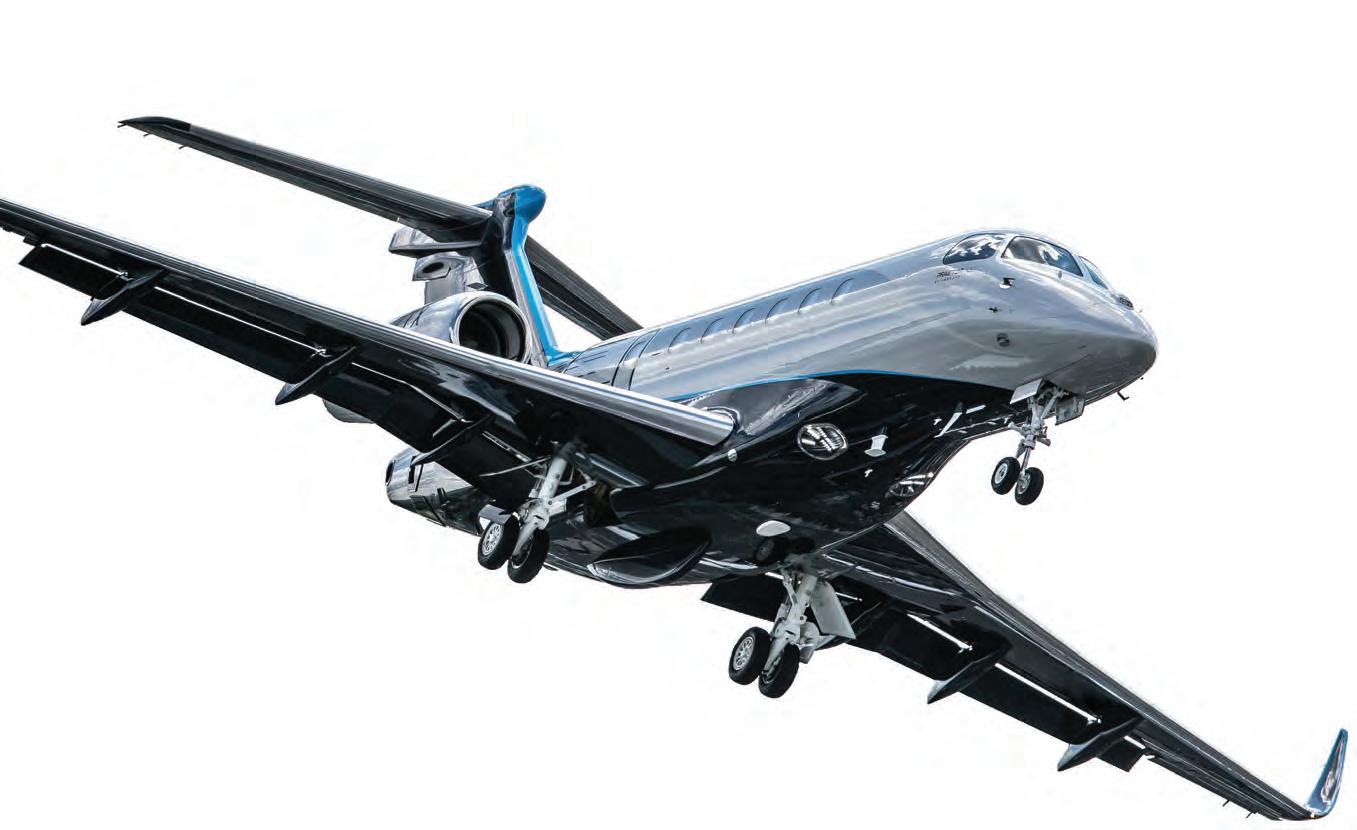


Scan the QR code to see the mission
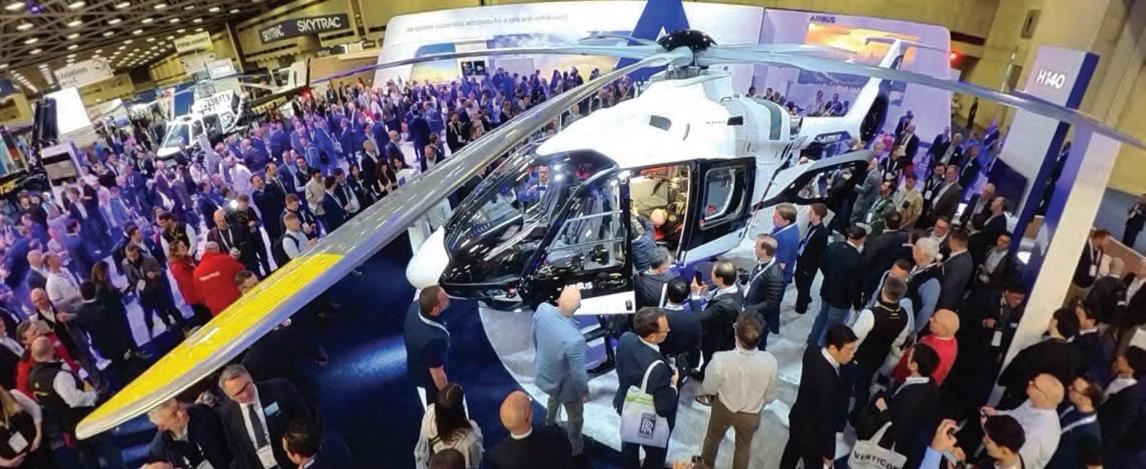
46 Verticon 2025 highlights launch of new models
8

Dassault logs record earnings, braces for tari impact 4 First flight-test HondaJet Echelon begins to take shape

6
10
12
14
18
GE Catalyst turboprop engine wins FAA approval
Industry billings top $31B as bizjet shipments increase
Aero Friedrichshafen: European bizav seeks boost from Aero Friedrichshafen
Aero Friedrichshafen: Bizav industry sees opportunity, despite challenges in Europe
EU’s fuel tankering rules are tough for bizav
20 AIN 2025 FBO Survey
41 Making the Cirrus SR G7 to Vision Jet transition



BY CHAD TRAUTVETTER
The first flight-test HondaJet Echelon is now starting to take shape at Honda Aircraft’s manufacturing facility in Greensboro, North Carolina. It has begun assembly of the light jet’s wing structure, the company reported in February.
First flight of the midsize aircraft is expected next year, with service entry scheduled for 2028. Formally unveiled at NBAA-BACE 2023, the twinjet will feature a larger cabin with increased passenger capacity and range over the HondaJet HA-420, though they share the same over-the-wingengine-mount configuration. Specifications of the HA-480 Echelon include a 450-knot top speed, 2,625-nm NBAA IFR range, and seating for up to 10 passengers.
Honda Aircraft’s production department began to stand up specialized assembly lines for the Echelon early last year, with the tooling in place before year-end. “With work on the first major subassembly of the HondaJet Echelon underway, the program has entered its next development phase,” the company said, referring to test article production.
In January, Honda Aircraft marked the completion of the HondaJet Echelon development simulator at its advanced systems integration test facility (ASITF) in Greensboro. This simulator uses data from wind tunnel models and actual aircraft hardware to predict aircraft performance in operational conditions, allowing engineers to evaluate key aircraft systems before the first flight of the Echelon.
“We are very excited to see the HondaJet Echelon program gaining momentum,” said Honda Aircraft senior v-p and chief commercial officer Amod Kelkar. “We are proud of the achievements we have made in the last several months, and it is just the beginning.
“We have a series of additional targets to hit in the coming months, each of which will bring us closer to the actual first flight next year. Market interest in the HondaJet Echelon grows, with almost 500 letters of intent signed to date, and numbers increasing every month.” z
Bombardier is finalizing its flight-test campaign for the Global 8000 and has moved toward validation and demonstration flights. This comes as Bombardier is eyeing entry into service of the 8,000-nm aircraft later this year. At the same time, the trials provided an opportunity for the Montrealheadquartered airframer to showcase the aircraft to the pilot community. In addition, Bombardier is finalizing a $3 million upgrade kit that will bring the predecessor 7,700-nm Global 7500 in line with the Global 8000’s performance. The upgrade is estimated to require about 14 days of downtime.
GE Aerospace, Honeywell Aerospace, RTX, and TransDigm Group have all emerged as potential bidders for Jeppesen, according to analyst Je eries. Reports began to surface late last year that Boeing was looking to sell the services, operations and flight information provider. The initial rounds of bids for Jeppesen were due at the end of January, Je eries said, estimating that the company could fetch $7 billion.
With eVTOLs poised to enter service in the next 18 to 24 months, FBO providers Atlantic Aviation and Signature Aviation are actively working to stand up vertiport infrastructure for advanced air mobility services. “The goal is to build vertiports where the people are,” said Kevin Cox, CEO of Vertiports by Atlantic, a newly created subsidiary following Atlantic’s acquisition in January of vertiport developer Ferrovial. “We’ll start with vertiports in big metro cities and then filter down to medium cities.” Signature CEO Tony Lefebvre said his company’s current emphasis is adapting its FBOs for eVTOL operations.
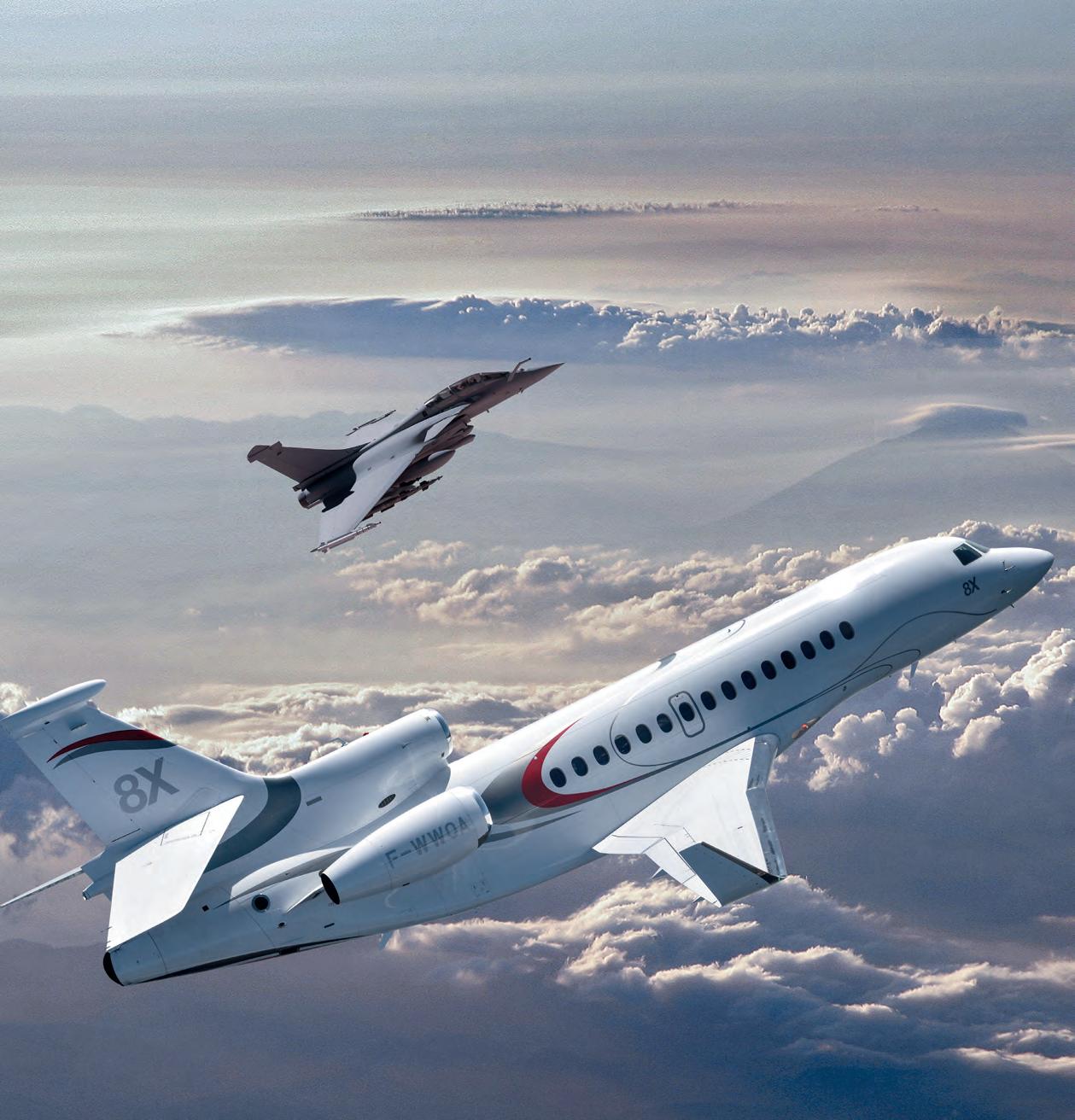




BY CHAD TRAUTVETTER
GE Aerospace’s Catalyst turboprop engine has received FAA certification, the culmination of a program involving more than 23 engines and some 190 component tests, the company announced on February 27.
GE said Catalyst is the first clean-sheet advanced turboprop of the 21st century, as well as the first to be certified to the latest Part 33 standards, which include more than 20 significant new requirements.
Textron Aviation’s Beechcraft Denali turboprop single is the launch platform for the new GE engine with service entry now anticipated in 2026.
“Certification of the Catalyst engine is a significant milestone for our company and a proud moment for all our team members who have dedicated their efforts to the design, development, and testing of this brand-new European turboprop engine,” said Riccardo Procacci, president and CEO for propulsion and additive technologies at GE Aerospace. “We are now fully committed to supporting the production ramp-up of the engine towards the entry
into service in support of our customers.”
The engine was designed, developed, and manufactured at GE Aerospace sites in Europe, including Avio Aero in Italy, the Czech Republic, Poland, and Germany. Test engines logged more than 8,000 hours during the certification process, GE said.
“Catalyst has been through a rigorous certification and testing process,” said Paul Corkery, Catalyst general manager at Avio Aero. “We are pleased with the performance of the engine throughout its ground and flight-test campaigns, and we remain fully focused on supporting Textron Aviation as they complete the certification process and prepare for entry into service of the Beechcraft Denali.”
According to GE, the engine’s 16:1 overall pressure ratio enables up to 18% better fuel consumption and up to 10% higher cruise power versus competing engines in the same 1,200- to 1,400-shp class.
Catalyst also features variable stator vanes and cooled turbine blade components made via additive manufacturing. z

Business aviation’s upward trajectory could be truncated due to recessionary fears spreading westward across the Atlantic to North America, according to early market indicators tracked by data specialist WingX.
“The average number of hours flown per aircraft is currently between 60 and 65 flight hours per month,” said WingX managing director Richard Koe. “But we are starting to see a bit of a gap between the number of aircraft coming into the market and activity levels, and there is now concern about a potential recession in the U.S., and the charter market is where we will see the turn first.”
Ninety-eight percent of airline passengers would consider using an eVTOL air taxi service as part of their journey, according to a survey conducted by Honeywell. Canvassing 1,000 U.S. adult travelers, the aerospace technology group also found that 79% of them would travel more often if they could use one of the new electric aircraft to get to and from airports. Factors include ease of use and convenience (61%), cost (61%), “not having to sit in tra c” (46%), minimal environmental impact (44%), and novelty or curiosity (44%).
Aviation leaders stressed the urgent need to step up modernization of the U.S. ATC system, calling it unsustainable early last month during a congressional hearing. But stakeholders and lawmakers alike reemphasized the need to avoid contentious debates around proposals such as privatization. Aviation subcommittee chairman Troy Nehls (R-Texas) also pointed to recent Government Accountability O ce findings that some 37% of the FAA’s ATC systems were unsustainable and another 39% potentially unsustainable.














BY CHARLES ALCOCK

The threat of tariffs on imports to the U.S. market could dent sales of Frenchmade Falcon business jets, according to Dassault Aviation chairman and CEO Éric Trappier. Announcing what he described as “unprecedented” net income of € 1.1 billion ($1.2 billion) during a press conference in Paris, he warned that the Trump Administration’s declared intention to impose tariffs on the European Union could undermine its objective of delivering 40 Falcons this year.
Acknowledging instability in the context of the war between Russia and Ukraine, and political turbulence in France, Trappier said the new U.S. government’s marked shift in strategy represented the most significant source of uncertainty around trading conditions in 2025. “The most concerning [political development] is the arrival of the new Trump Administration,” he said, highlighting the possibility of tari ff s and also what he characterized as a breach in the long-standing defense alliance between the U.S. and France.
Nonetheless, the Dassault group’s net revenues increased by almost 30% in 2024 to reach € 6.2 billion, while net earnings increased by 19% to just under €1.1 billion. It closed last year with a record backlog of orders valued at €43.2 billion.
This year, the company is targeting further revenue growth to € 6.5 billion. However, Trappier warned that political and economic turbulence, including rising taxes in France and further European Union action to suppress business aviation on environmental grounds, could undermine this objective.
The Dassault CEO’s comments were made the day after the U.S. government initially imposed, and later delayed, 25% tari ff s on major trading partners Canada and Mexico, with President Trump having also declared his intention to charge the same rate on European goods. Trappier pointed out that its rival Bombardier has delayed its forecast for 2025 due to the uncertainty surrounding tariffs on Canada, where most of its manufacturing is based.
At the same time, Dassault and the wider European business aviation sector feel increasingly embattled in the face of hostile EU policies, including their exclusion from the so-called taxonomy policy that determines which industries are eligible for support as part of decarbonization efforts. Trappier said it is “scandalous” that U.S.made business jets are not penalized by this European policy, and that this is why Dassault is taking the lead in a legal case against the European Commission in the European Court of Justice. z
Sikorsky unveiled a Phase IV main gearbox as a central feature of its new S-92A+ evolution, the culmination of more than $100 million and a decade of research and development.
The gearbox is designed to counter the possibility of loss of main gearbox lubricating oil pressure on the large-cabin S-92. An independent, auxiliary oil lubrication system has its own three-gallon reservoir that will kick in if oil pressure in the primary system fails. The company, which has amassed 800 hours of testing, anticipates certification this year and has begun to take orders.
Nearly 15 years after the R66 received FAA certification, Robinson Helicopter has introduced significant upgrades to its singleengine turbine helicopter. Now called the R66 NxG, the latest version adds an integrated Garmin avionics suite with autopilot, impactresistant windshield, and new interior material and exterior paint scheme options.
Buyers are able to choose from three trim levels: Riviera, Southwood, and Palo Verde. Deliveries are expected to begin in 2026.
Airbus Helicopters’ PioneerLab team is set to make its first flight with a modified, hybrid-electric H145 in 2027. During a briefing at its Donauwörth, Germany, facility, the company said the project is on track to confirm a preliminary design later this year. The H145’s existing Safran Helicopter Engines Arriel 2E turboshafts will be replaced by a system combining a single Pratt & Whitney Canada PW210S engine with a pair of Collins Aerospace 250-kW electric motors and controllers.






A worldwide network, now with even more feld and airborne support teams near you.










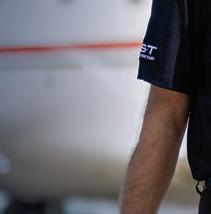























































BY KERRY LYNCH
Business and general aviation fixed-wing aircraft billings soared last year, increasing by 14.3% to reach $26.7 billion, as shipments improved by 3% to 3,162 units, the General Aviation Manufacturers Association (GAMA) reported. Meanwhile, helicopter billings improved by about 10% to $5.2 billion on 1,035 shipments, a 2.5% increase from 2023.
Releasing its 2024 shipment and billings report during its annual State of the Industry press conference in Washington, D.C., the association noted that collectively, values reached nearly $32 billion. “It is notable that for the first time in a decade, our companies again exceeded $30 billion in annual billings and for the second year in a row, we shipped more than 4,000 units,” said Pete Bunce, who presided over his final State of the Industry event as president and CEO of GAMA before retiring this month. “This strong performance provides great momentum into 2025, but it is essential that policymakers and regulators on both sides of the Atlantic recognize that for continued growth, they must work with industry on policy issues such as taxes, trade, regulations, and supply chain.”
Except for turboprop shipments, all segments of the industry strengthened in 2024, despite complexities of the supply chain as well as strikes. Business jets led the increases, up 4.7% to 764, which helped drive the big step forward in billings.
As demand in the training market continued to surge, piston airplane deliveries improved by 4.2% to 1,722, while piston helicopter shipments were up by one aircraft to 210 and turbine helicopters increased by 3% to 825. Turboprop shipments, however, dipped by 1.9% in 2024 to 626.
Gulfstream Aerospace alone accounted for nearly one-third of the fixed-wing billings at $8.3 billion as it began to ramp up on its new flagship the G700. The Savannah, Georgia manufacturer’s large-cabin shipments swelled by 32.6% in 2024 to 118, and its total shipments reached 136, marking a 22.5% gain.

PETE BUNCE GAMA PRESIDENT AND CEO
Bombardier contributed another $7 billion to the industry’s total billings as its deliveries improved by eight units to 146, matched evenly at 73 apiece for its Global and Challenger lines. However, the mix differed with two fewer Globals shipped and 10 more Challengers on the year.
Conversely, though, the nearly monthlong strike at the start of the fourth quarter took a toll on Textron Aviation’s results. Business jet deliveries were down 18 units and civil turboprops by six units in the fourth quarter alone. As a result, the company’s billings in 2024 slid to $3.3 billion from $3.6 billion a year earlier.
Embraer, meanwhile, enjoyed a $400 million increase in revenues in 2024 to $2 billion as it delivered 15 more aircraft in the year for a total of 130. Fourteen of that increase came from its Praetor models.
Enstrom Helicopter unveiled new Elite and Signature trim levels for its 480B, featuring upgraded avionics with digital displays. At the top of the line is the 480B Elite, which comes in a range of paint schemes designed by famed airbrush artist Dean Loucks. On the inside, it has a glass instrument panel with the Garmin G500H TXi touchscreen display, GTN750 GPS navcom (or optional GTN650), ADS-B In/Out, Genesys three-axis autopilot, and air conditioning. Below that, the 480B Signature has comparable avionics, with autopilot and air conditioning available as options.
Propulsion pioneer MagniX is developing a family of electric engines specifically designed for helicopters, catering to demand for high-speed applications with between 6,000 and 7,000 rpm, compared with 1,900- to 2,500-rpm powertrains it o ers for other applications. Helistorm engines will be integrated with the company’s 300 Wh/kg Samson batteries. MagniX plans to start testing in 2026 and deliver to early customers by that year end.
Bell Textron showed o a fresh slate of luxury interiors for its light-single 407 GXi at Verticon, adding to the OEM’s designer series catalog that debuted with the Bell 429 in 2022. Upgraded options for the 407 include leathers and color coordinated schemes featuring Black Kydex panels, headliner, trim, and custom-stitched seats. Available interior color schemes include charcoal and jet black; snow and jet black; arctic grey and charcoal; sand and jet black; and crimson and jet black.

Discover how the PC-24 breaks all existing notions of what a business jet can do.
BY CHARLES ALCOCK

Aero
Business aviation is set to have its highestever profile at the annual Aero Friedrichshafen show running from April 9 to 12. The enhanced focus on the sector comes at a time when the industry in Europe is facing political turbulence with operating costs inflated by decarbonization policies and operational restrictions at airports.
Held at Bodensee Airport Friedrichshafen close to Lake Constance in southern Germany, the annual event has sometimes been described as Europe’s answer to the EAA AirVenture show in Wisconsin. This year, the lineup is even more diverse with a new Business Aviation Show Hub, alongside light and aerobatic aircraft, gliders, ultralights, drones, and an assortment of flying curiosities.
At the heart of the new business aviation enclave is the 2,000-sq-m (21,500-sq-ft)
Dome structure, made to accommodate some of the exhibitors and also to serve as an area for presentations. This structure is part of the static display, which will include multiple business aircraft, including a Bombardier Challenger 3500, Gulfstream G600, Dassault Falcon 2000, and Pilatus PC-24.
The Messe Friedrichshafen exhibition site also features a pair of exhibit halls occupied by business and general aviation companies. These include a broad cross-section of aircraft makers, such as Honda Aircraft, Airbus Helicopters, Leonardo, Cirrus Aircraft, Boeing, Textron Aviation, Daher, and Piper Aircraft. It would appear that some airframers may have opted to gravitate to Aero Friedrichshafen as a change from attending May’s Genevabased EBACE show, which this year will not include a static display of aircraft.
The Aero Friedrichshafen exhibitor list also boasts a rich array of Europe’s leading business aviation service providers, including multiple aircraft charter and management groups, as well as maintenance, repair, and overhaul specialists. Among those exhibiting are Aero-Dienst, ACC Columbia Jet Service, Augsburg Air Service, DAS Private Jets, DC Aviation, Delta Interior, ExecuJet, FAI Aviation, Jet Aviation, and Rheinland Air Service.
Overall, the show draws approaching 700 exhibitors from 35 countries, and 32,000 attendees are expected to pass through the gates. On Saturday, April 12, the event will close with a public day, including a flying display.
At Aero Friedrichshafen, the German Business Aviation Association will be
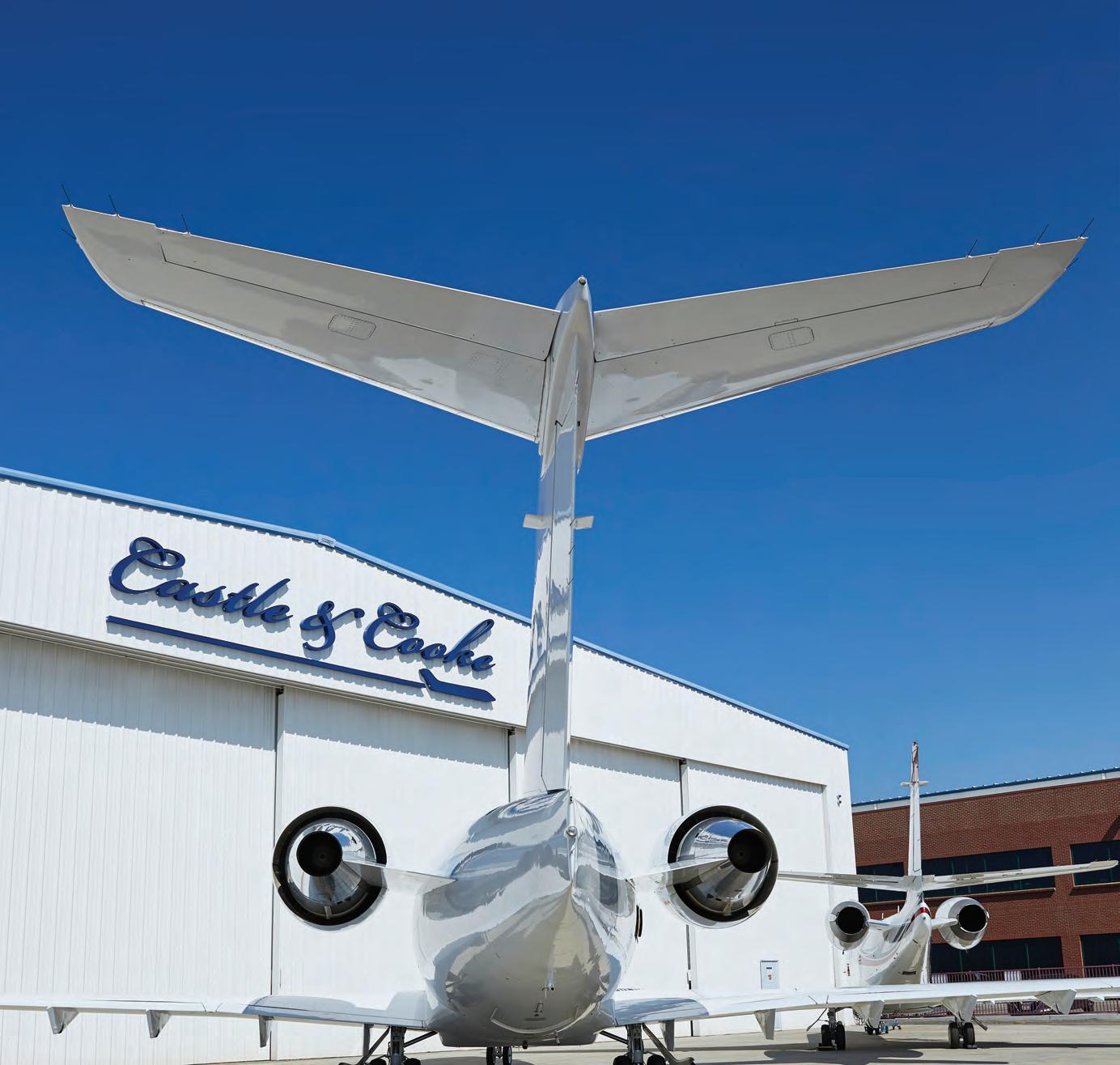

articulating the case for an industry that feels increasingly embattled and scapegoated by European political leaders.
The group is part of the European Business Aviation Association (EBAA), which has accused the European Commission of discriminatory policies, including the exclusion of the sector from the European Union’s sustainability taxonomy.
In January, EBAA joined forces with the General Aviation Manufacturers Association to publish a report making the case that restrictions on business aviation could cost Europe’s economy up to € 120 billion (nearly $126 billion) in foreign direct investment and 104,000 jobs. The findings were based on research
by Oxford Economics, which said the industry contributes around €100 billion to the European Union’s GDP each year and warned that Germany is one of several countries that could be impacted most severely.
Rather than imposing taxes targeting business aircraft, along with new slot restrictions and bans on short-haul flights, EBAA is arguing that Europe’s politicians should instead seek to harness the industry’s resolve to introduce carbon-reducing technology.
Based on around 400,000 business aircraft departing 1,000 European airports each year that each fly an average of 800 kilometers (432 nm), EBAA and GAMA
estimate that this activity accounts for just 0.8% of all aviation industry carbon emissions.
Meanwhile, German business aviation leaders are cautiously hoping for greater understanding of their plight with Friedrich Merz, a noted aircraft owner and pilot, set to become the country’s new chancellor after his CDU party achieved the largest number of parliamentary seats in the February 23 election.
That said, Merz, who has faced criticism for his use of his Diamond DA62 twin-engine aircraft for business and personal trips, may have too many other priorities to focus on in the face of looming political, security, and economic crises. z
Despite projections from Argus International that business flight activity in Europe will show only marginal growth of 0.3% in 2025, stabilization following a postCovid spike now appears to be cause for some optimism within the region. Notably, with the forecast for Europe slightly stronger than the 0.2% traffic increase Argus projects for the North American market this year, industry leaders have indicated they expect increased demand for business aviation despite the challenges confronting the sector.
“This resilience of the business travel sector demonstrates its ability to adapt even in a difficult economic environment and underscores its continued importance and value to business travelers,” Svenja Wortmann, managing director of aircraft management and charter group DC Aviation, told AIN
BY CHARLOTTE BAILEY
According to the European Business Aviation Association (EBAA), the industry represents approximately 8% of European air traffic. Physically connecting 1,400 European airports—of which around 900 are inaccessible by larger scheduled services— the group argues that it also serves as a vital link to connect people and acts as a timesaving tool to facilitate that in-person presence. EBAA estimates that European business aviation allows passengers to travel to at least three times more destinations than the airlines.
The introduction of the Aero Friedrichshafen show’s 2,000-sq-m (21,500-sqft) purpose-built “Business Aviation Dome” appears to represent a reasserted confidence in European business aviation, with a wide array of aircraft types, manufacturers, and operators in attendance indicative of the diverse mission profiles within the region.
Recently published delivery figures from the General Aviation Manufacturers Association (GAMA) suggest that with business jet deliveries for 2024 up 4.7% worldwide, units shipped to Europe (13% versus 12.1% in 2023) have overtaken North America in terms of annual growth (69.4% in 2024 vs 74.9% in 2023).
“We are observing a clear rise in demand for on-demand, flexible services, as clients seek more convenience and personalized experiences,” explained a spokesperson for charter operator Luxaviation. “The customer base is also shifting, with more younger people opting for charter services [and, as such] communication preferences are also evolving, with clients favoring quick, app-based interactions.”
Luxaviation added that it continues to see “strong demand for a fully integrated and customized approach to service delivery—a 360-degree approach






A proven predictive analytics system that forecasts the service you need—before you need it.





















that encompasses all aspects of purchasing, maintaining, and operating an aircraft.” The group will be at the Aero Friedrichshafen show with sister company ExecuJet, which claims to run the largest network of FBOs in Europe.
Textron Aviation also buys into the optimism and is “looking forward to a good year,” said Lannie O’Bannion, the U.S. manufacturer’s senior vice president of global sales and flight operations. According to O’Bannion, recent “game changer” investments in the Cessna Citation light jet family in the shape of the updated M2, CJ3, and new CJ4 platforms include Garmin’s emergency Autoland system, offering “not only an advancement in automated flight capabilities, but a profound enhancement in passenger and pilot peace of mind.”
Acknowledging the impact of 2024’s work stoppage at Textron Aviation, O’Bannion confirmed that “during the strike, the company focused on improving part flow and reopening the manufacturing lines with progressively improving efficiency.”
However, Europe brings its own operational nuances. “The biggest challenge we see in Europe is the regulatory environment,” explained Andy Somers, Honda Aircraft’s vice president of sales and marketing, noting that the specifics of EASA’s certification processes can sometimes extend the time it takes to bring products to the European market. The manufacturer also maintained that various operating requirements in Europe impinge on how operators can enjoy their aircraft.
Having certified its Autothrottle capability for the HondaJet last fall, Garmin is also working to develop its emergency Autoland function, with both products being available on new and preowned aircraft. “With the strong preowned business jet market forecasts we are seeing for 2025, we are looking into additional packages and services we can offer,” Somers said. Meanwhile, Honda Aircraft is aiming to start flight-testing its new HondaJet Echelon model in 2026.

Gulfstream is also eyeing the upcoming entry into service of the G400 and G800. Both will “change the game for the European business aviation landscape,” maintained Michael Swift, the U.S. manufacturer’s group vice president of international sales for Europe, the Middle East, Africa, and Asia Pacific.
The G800 will offer large-cabin comfort for flights of up to 8,000 nm cruising at Mach 0.85. Gulfstream says the G400’s 4,200 nm range makes it “ideal for the connections it can make from Europe with technology, cabin size, and speed capabilities never seen before in its class.”
At the smaller end of the aircraft spectrum, Cirrus remains very much concentrated on elevating the experience for owner pilots. It is targeting a market segment with an acquisition price of less than $7 million.
“When we look at Europe, we see longterm viability,” suggested CEO Zean Nielsen, referencing a “meaningful” fleet of around a thousand aircraft—including the SR20, SR22, SR22T, and SF50 Vision Jet—in operation. With the newly- certified G7 series developed to increase commonality between piston and jet products, he highlighted the importance of making what he characterized as the owner-flown “time machine” a “premium, not a luxury, experience.”
Nielsen acknowledged that Europe does present additional challenges. Potentially
more cumbersome than the U.S. operational experience, the challenges of fuel availability and appropriate airport infrastructure, plus elevated fuel and landing fees, can often make the sector appear fragmented.
However, with European operators largely having “never known any other way,” he said Cirrus continues to support its owners through a solid ecosystem of sales, training, service, and support centers.
Regardless of the platform flown, the importance of infrastructure provision—be it service centers, FBOs, or overarching air traffic management solutions—remains integral to ongoing growth.
Luxaviation believes that the fragmentation of air traffic management across Europe complicates efforts to streamline operations, with the Single European Sky initiative (launched in 2004 and appointing Eurocontrol as network manager until 2029) being a critical factor in overcoming these hurdles. Additionally, airports’ multifaceted challenges, such as managing noise and public health concerns, must also be prioritized alongside the broader goal of decarbonization, according to the operator. Despite negative accusations targeting business aviation’s carbon emissions increasingly making their way into the mainstream media, the industry points to a myriad of proactive investments and
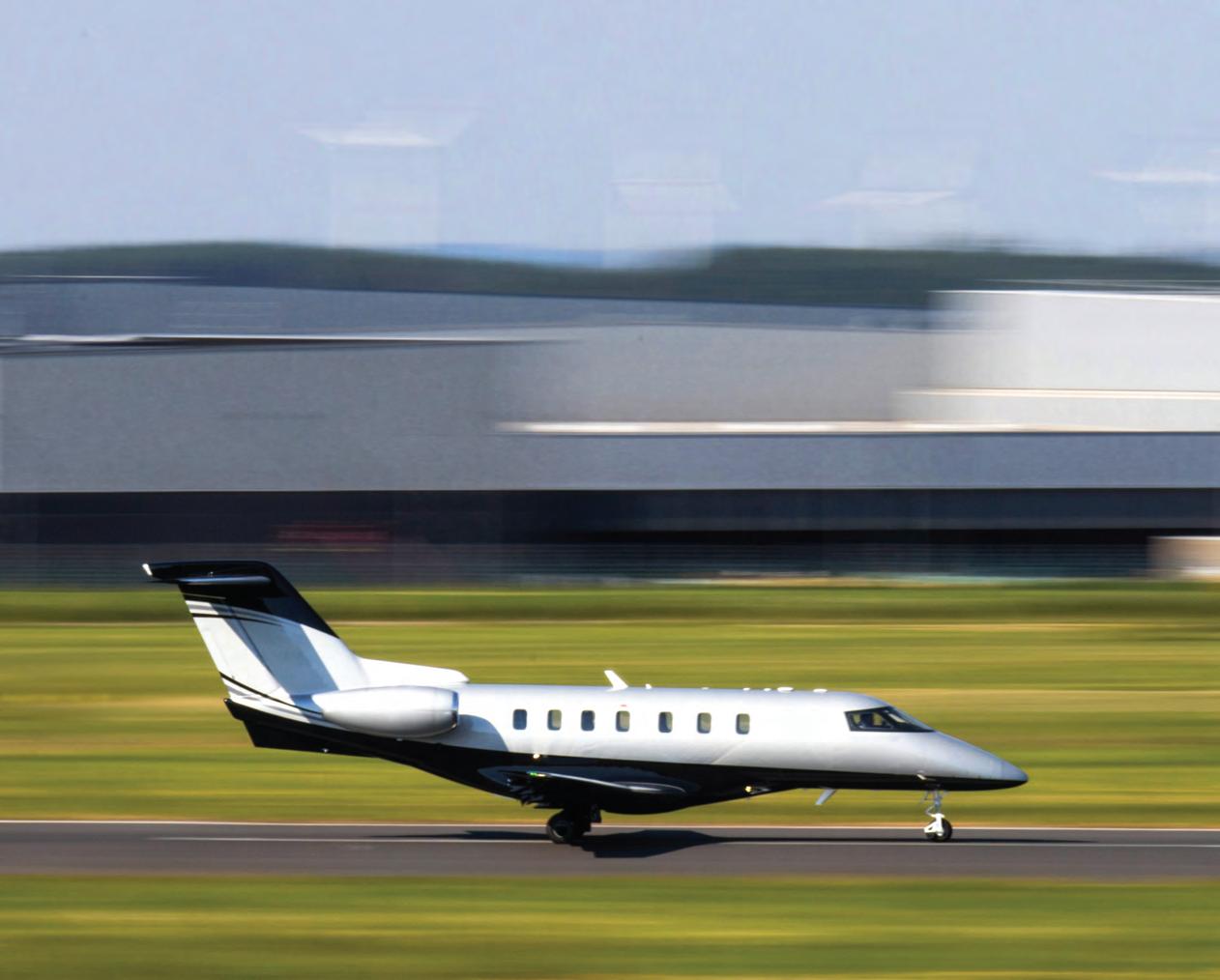
With the current ups and downs in availability, pricing, maintenance, financing, and operating costs, today’s business aircraft market is less predictable than the weather. That’s why, whether buying or selling, it’s more important than ever to have an experienced aircraft broker on your team to help ensure that your next aircraft transaction is a win-win for everyone involved.

From cars to boats to homes and everything in between, all of us have bought and sold countless things in our lives with little or no consideration for the fine points of the deal. What can go wrong?
While personal experience may be all we need most of the time, that DIY approach can be problematic when we try to navigate the uncharted waters of the business aircraft market without the guidance of a seasoned aircraft broker. Doing that is like a student pilot trying to land a jet. It’s a lot easier with a trained professional in the right seat.
Even if you had, say, seven or so years ago, successfully transacted the purchase or sale of your latest airplane, so much about buying and selling airplanes has changed and continues to change every day.
“One of the biggest di erences is there are many, many more aircraft models that a buyer can choose from today,” explains Rene Cardona, a longtime member of Duncan Aviation’s Aircraft Sales and Acquisitions team. “The industry’s growth has meant a tremendous array of aircraft models that are suitable for a particular mission type.”
“For example, with the right avionics upgrades and fresh paint and interior, a 20-year-old jet is just as capable as a newer model for many missions,” he continues. “But that doesn’t mean that older airplane is the right choice for every buyer.”
“Today, many older models, as capable as they may be, have really started to decrease in resale value,” Todd Jackson, vice president of acquisitions for Elliot Jets (the aircraft sales division of Elliott Aviation), adds. “The depreciation on these models has accelerated quite a bit. And while prices have not yet returned to pre-COVID levels, they’re getting there.”
“The earlier value run-up we were seeing across the board was crazy, and now it’s coming back down,” he continues. “The volatility of aircraft value and pricing can catch a buyer or seller o -guard, which can cost them a lot of money.”
It’s too true. According to our experts, these past few years have been textbook “seller’s markets,” with little or no room for negotiations. But as you might expect, the pricing pendulum is swinging, so sellers aren’t as bullish today.
Backed by decades of industry experience and an extensive global network of buyers and sellers, Elliot Jets is the ideal partner for aircraf transactons of every kind. We use cutng-edge research, technical expertse and a customer-centric approach to guide you through each step along the way:
◦ Accurate appraisals & pricing
◦ Detailed logbook reviews
◦Aggressive marketng campaigns
TODD JACKSON VICE PRESIDENT OF ACQUISITIONS
◦Strategic negotatons
◦ Hassle-free closing assistance

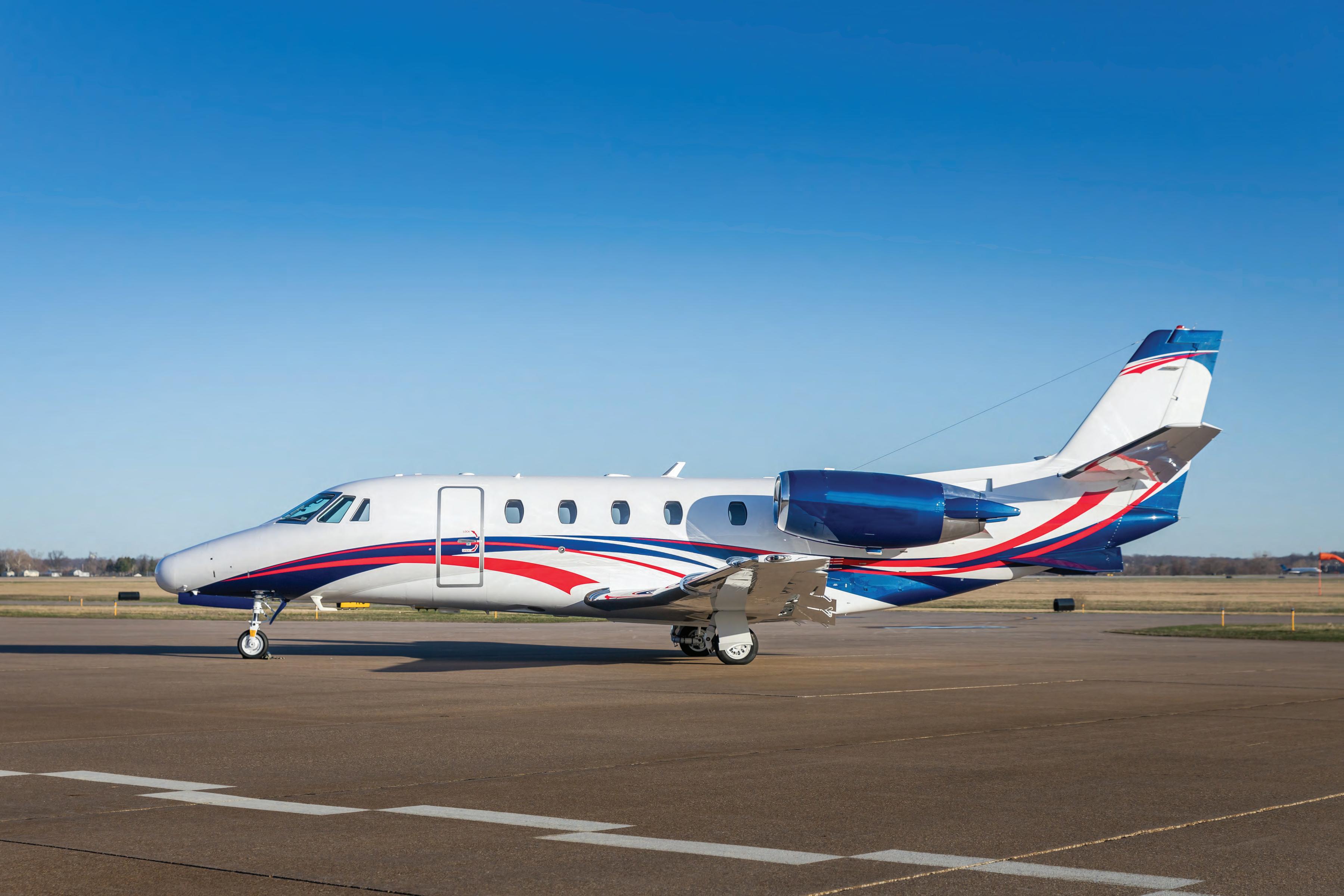


And it’s not just the physical aircraft market that is in flux; so are the people who are looking to buy or sell their airplanes. The post-pandemic “airplane rush” brought a lot of first-time buyers into the market, and their expectations are di erent from those of the more “traditional” business aircraft operators.
All this has transformed the seemingly simple act of buying or selling an airplane into a multidimensional transaction that requires a level of market savvy that only a professional business aviation broker could possibly possess.
Why do you need a reputable aircraft broker? Well, consider the plight of our aforementioned student pilot trying to land a business jet in zero visibility. Had the aircraft they were piloting been equipped with Garmin’s revolutionary “Autoland” technology, a simple button push would have solved their landing dilemma.
It’s kind of the same with hiring an experienced aircraft broker. All the help you need with any part of the transaction is just a phone call away. Without making it their full-time job, the typical aircraft buyer or seller can’t know everything they need to know to culminate a successful transaction.
“Obviously, the big thing is professionals who are trading every day have a very good understanding of what to look for to value an airplane correctly,” Elliott Jets’ Jackson says.

WHAT IS THE NUMBER ONE BENEFIT OF WORKING WITH AN EXPERIENCED AIRCRAFT BROKER?

Aircraft Acquisitions Manager Duncan Aviation
An experienced broker pays attention and advocates for your best interests in an aircraft transaction, helping aircraft owners/operators make well-informed decisions that minimize risk, while maximizing the return on their investment.
“That’s huge. Knowing the value drivers with any particular make and model can mean the di erence between a great deal and a bad one.”
For example, let’s say you’ve found this unbeatable price on a an older midsize jet that looks and smells factory fresh. Looks can be deceiving, and an experienced broker knows where true value lies.

Duncan Aviation’s Aircraft Sales and Acquisitions team is backed by the company’s extensive MRO expertise and services, providing insight into aircraft value when evaluating market options and helping explore potential customization options available when an aircraft is purchased. Source: Duncan Aviation.
While the airplane may look great, the truth is that all too many high-time, older aircraft entering today’s market are increasingly dealing with obsolete equipment or supply chain issues that not only significantly decrease their current market value but also greatly increase downtime and costs when repairs are required.
More than ever, in today’s preowned market, buyers and sellers need to align themselves with an experienced team that can adapt quickly and provide facts-based intelligence about current market conditions.
And then there are the all too frequent instances where even the “best deals” are wrong because the airplanes aren’t right for the customers’ individual needs.
“A qualified broker will do a detailed analysis of what the buyer’s particular requirements are for the aircraft to determine the best options within their purchase and operating budgets,” Duncan Aviation’s Cardona explains, “not only for the purchase price but also the operating costs. I’ve seen it many times where someone has fallen in love with a particular type and ended up buying an airplane that turns out to be too big for their needs and budget.”
Of course, it’s not only the buyer who needs to keep a sharp eye on the market. “From the seller side, it again starts with a detailed analysis of the current market,” Cardona continues. “How well are those models selling, and at what prices? What kinds of equipment do they have? What is the ‘value’ of the configuration? What kind of engine program is it on?”
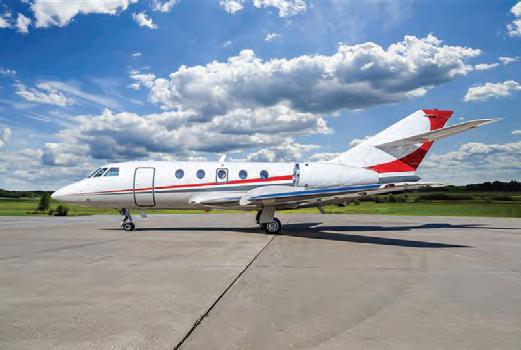
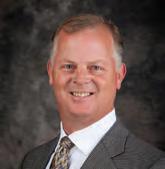
TODD JACKSON Vice President of Acquisitions Elliott Jets
The biggest benefit is having someone with access to real-time market data and the experience to use to determine a particular airplane’s actual value. It’s not something that’s easy to figure out. And it’s the only way to protect yourself from paying too much when you buy or accepting too little when you sell.
“We need to determine where their airplane falls in the market compared to its competition to determine what price we should ask and what we should accept,” Cardona adds. “Remember, it’s a depreciating asset. As it sits on the market, its price keeps going down.”
Another of the most noteworthy benefits of working with a broker is the ability for the buyer and seller to remain
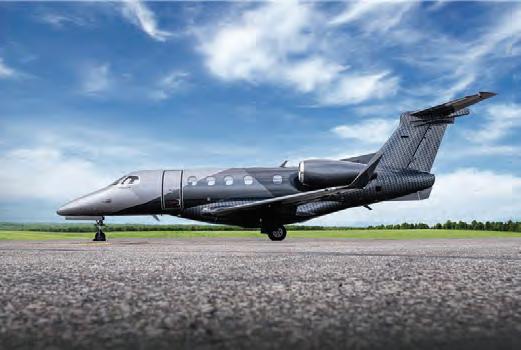
Aircraft sold by Elliott Jets brokerage service. Source: Elliott Jets.
anonymous. If you try to handle the transaction yourself, your identity and your company’s identity are out there for everyone to see. And isn’t protecting your travel privacy one of the top reasons to operate an airplane in the first place?
One of the biggest mistakes many DIY buyers and sellers make is working out a “buddy-to-buddy” deal.
“Improperly evaluating the value of an aircraft is a mistake all too many people make,” Elliott Jets’ Jackson says. “If they’re buying directly from a ‘buddy,’ no doubt someone is going to be a bigger loser than the other, and the losses can be significant.”
“Buyers may not think they need a broker because they know the seller, but that’s not often a good situation,”
Duncan Aviation’s Cardona says. “In the time the airplane has been up for sale, the market value may have dropped a million dollars. Brokers are experts in the aircraft marketplace, handling the roadblocks and many nuances we encounter in aircraft transactions.”
“And it’s not only the fair valuation of the airplane that’s missed. It’s not uncommon for a buddy sale to be ‘as is,’
so a thorough pre-buy is often skipped over,” Elliott Jets’ Jackson adds. “That is a huge mistake. A detailed pre-buy should be at the top of every buyer’s do not miss list.”
“I’m not saying anyone would purposely hide a problem, but some aircraft types have historic maintenance issues that the seller may not know about, or its avionics may be obsolete and no longer supported,” Jackson adds. “Without a detailed pre-buy, the purchaser won’t discover these problems until it’s too late.”
Both Jackson and Cardona stressed that a reputable broker would not, under any circumstances, recommend the purchase of any aircraft without a detailed pre-buy inspection by someone who knows that make and model inside and out. “That’s one of our primary values,” they both say.
If you type “aircraft broker” into your favorite search engine, you’ll see hundreds of thousands of possibilities. It seems that since COVID, everyone with access to the internet can help you buy or sell an airplane. Of course, nothing could be further from the truth.

Duncan Aviation’s Aircraft Sales and Acquisitions team has the experience of 3,500 transactions and nearly 70 years of representing some of the most popular business jets in service today.

At Duncan Aviation, we understand that buying or selling a jet is a profoundly personal journey. As your vital advisors, we o er operational expertise and timely insights that go beyond the surface and support you throughout your ownership experiences. Our team’s dedication and vast network of industry connections ensure that every decision you make is thoroughly informed, aligning perfectly with your unique mission and aspirations.
www.DuncanAviation.aero/aircraftsales
Rule number one in choosing an aircraft broker is to limit your search to only those individuals or organizations that are members of the International Aircraft Dealers Association (IADA). It’s the easiest way to separate the true professionals from the wannabes.
“Choosing an experienced and ethical team, preferably an IADA member, with a demonstrated track record of valuing long-term relationships over individual transactions, is a good place to start,” Duncan Aviation’s Cardona explains. “Talk to peers who have recently purchased or sold aircraft and find out why they would or wouldn’t work with that organization again.”
Elliott Jets’ Jackson adds, “Whether I was buying or selling, I would zero in on those IADA members who specialize in the category and class of aircraft I am interested in. Then it’s just getting on the phone and talking. There’s no mystery to it; you want to find someone who you are comfortable with,” he said.
Another insider’s tip is to select a broker well-versed in the aircraft category you are considering. Yes, one of a broker’s primary functions is to help you choose the “right airplane for your needs,” but if you know a turboprop or light jet is your best solution, there is no sense in working with a broker who specializes in ultra-long-range aircraft.
It can also be extremely beneficial to work with a broker who is connected to a business aviation MRO organization. They get invaluable real-world experience with the ins and outs of all kinds of aircraft.
Both Elliott Jets’ and Duncan Aviation’s aircraft brokerage arms benefit from this type of “operations” information. Every time one of either company’s maintenance facilities works on an aircraft, they learn more about the particular issues that a model typically encounters throughout its service life. That tribal knowledge is shared with the respective MRO’s brokerage team.
“The insights are a huge benefit to our customers because we can draw on that history to help us lay out and execute a detailed strategy for our clients,” Elliott Jets’ Jackson says. “The broker will work with their client to educate them to make sure they understand the potential pitfalls for the type of airplane they are buying or selling.”

No matter the broker’s background or a liation, Duncan Aviation’s Cardona stresses, “The broker’s value is in showing you all the details and specifics of owning and operating any particular make and model. They’re going to learn all about your particular needs and then match the airplane to that mission,” he says.
“If you are a seller, the broker’s responsibility is to establish how your aircraft compares to its competition and then price it fairly,” Cardona continues. “Then, they will create an advertising program, both in print and on the web, that will expose your airplane to qualified buyers in the best way possible.”
“The bottom line is you want to work with a broker who knows the importance of all the individual steps of the transaction,” Elliot Jets’ Jackson adds. “We’re not the experts, but we know how to put together a team with all the knowledge and experience ranging from taxes to financing to maintenance to whatever the customer needs.”
“Then it’s just quarterbacking the customer and the airplane through the entire process, whether buying or selling,” he says. “My job is not done when I turn the airplane over to the maintenance facility. That’s when the fun really starts.”
practices to stem that footprint across the sector.
The increasing adoption of drop-in sustainable aviation fuel (SAF) remains a crucial short-term strategy for many operators and OEMs. As such, many OEMs have ongoing investments to research and facilitate its use. Gulfstream demonstrated this capability with the world’s first 100% neat-SAF-powered transatlantic flight. “This serves as a great example of the positive efforts we are making,” Gulfstream’s Swift explained.
Honda Aircraft’s Germany-based European dealer Rheinland Air Service is also committed to using SAF on all its ferry and demonstration flights. Last year, the NBAA awarded Honda Aircraft its Sustainable Flight Accreditation in recognition of its SAF activities. The HondaJet’s GE Honda HF120 engine, meanwhile, has already passed 100% SAF tests on the ground.
“Honda is no stranger to developing new technologies that challenge [environmental] concerns, and we bring the same zeal with which our parent company [the Japanese automotive group] has developed
new vehicle technologies to aviation,” the company stated.
All Textron Aviation turbine aircraft can operate with SAF as part of the company’s overall endeavor to reduce carbon emissions by 50% by 2050. At the same time, the manufacturer is pressing for overall fuel efficiency gains and has committed to improving fuel e ffi ciency by 2% annually.
Other environmental initiatives include Textron Aviation’s 2023 introduction of its SustainableAdvantage offset program.
Both the Honda HA-420 HondaJet and Cirrus’ SF50 Vision Jet claim best-in-class fuel efficiency in the light and very-lightjet segments. The Cirrus SR20 offers an hourly operating cost of around $220.
Because the “sweet spot” of Cirrus’ mission profile is carrying one to seven people between 200 and 600 nm, Nielsen believes selecting the right aircraft for the task at hand is also key in saving both carbon and cost. Pointing to a recent analysis of two million business jet flights indicating that the average mission lasts less than two hours, carrying 1.9 passengers, he claimed, “the Vision Jet can perform the
same missions at a fraction of the cost.”
As of December 2024, 600 of the aircraft had been delivered, with some European charter operators already benefiting from the type’s cost-effective approach.
Stuttgart-based DC Aviation’s adoption of several emission trading schemes results in it offsetting more than 65% percent of its carbon dioxide emissions annually. This is augmented by a fully electric ground transportation and ground handling fleet at various locations.
“We recognize that our business model results in a higher impact on greenhouse gas emissions,” said DC Aviation’s Svenja Wortmann. “However, we are not discouraged and are undertaking great efforts to make a significant positive contribution to environmental protection.”
Similarly, Luxaviation has acknowledged its role in the environmental impact of private aviation and is aware of its responsibility, promoting transparency about its emissions and mitigation measures.
“Additionally, reducing empty legs through efficient scheduling, mitigating contrail formation, and optimizing flight operations are crucial,” it concluded. “Cultural barriers and a lack of data sharing further hinder collaboration, slowing progress towards sustainable practices.”
Ultimately, the global aviation industry is responsible for just 2% of carbon emissions produced by humans, just 2% of this overall figure is caused by business aviation. With this in mind, a January GAMA/ EBAA-commissioned study revealed that “the limited environmental benefits associated with constraining the use of business aviation services would have economic costs that should not be ignored,” estimating that Europe could become less attractive for foreign direct investment.
European flight activity declined 5.1% in 2024, when compared with 2023. The busiest month over the last two years was July 2023 and the lowest month was January 2024. The market was down most of the year but over the last two months showed signs of stabilizing, which is a positive sign heading into 2025.
And it’s not just business or leisure travelers set to suffer. “As an industry, it is important we highlight the benefits of business aviation, from medevac to cargo operations and surveillance,” suggested Textron’s O’Bannion. z
BY CHARLES ALCOCK
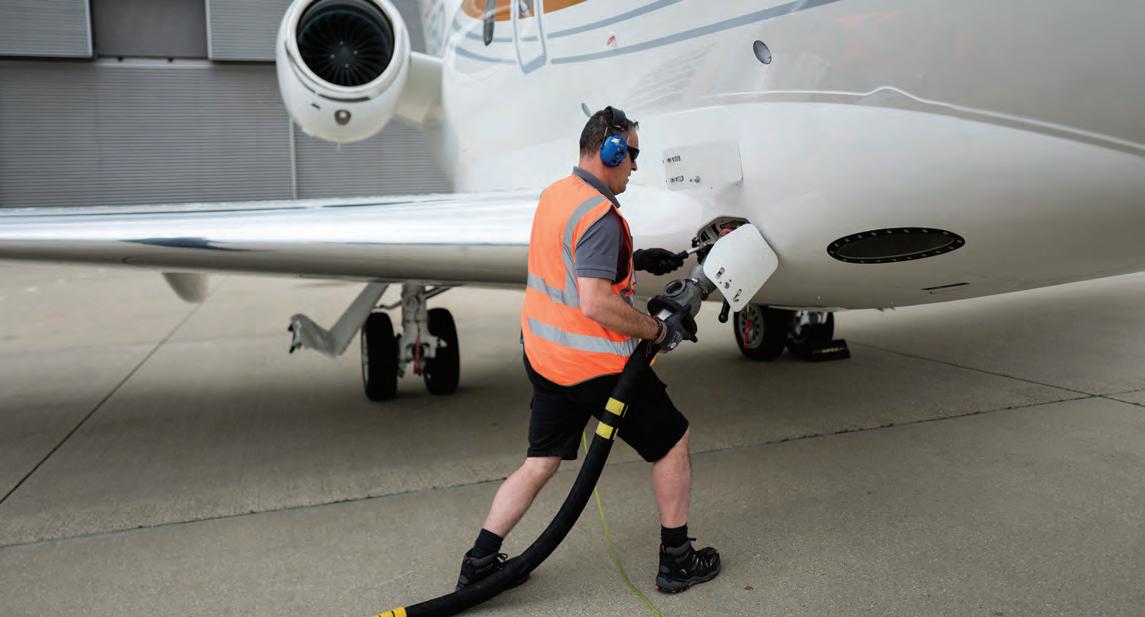
The European Commission’s efforts to prevent fuel tankering by aircraft operators are posing significant headaches for the business aviation sector. Rules that took effect from January 1 impose significant financial penalties on operators conducting 500 or more flights from European Union (EU) airports each year who can’t prove that they uplifted at least 90% of their required fuel from those locations.
According to the European Business Aviation Association (EBAA), the anti-tankering policy is fundamentally unfair and disproportionate for the sector it represents. Nonetheless, reporting requirements started on March 1—applying to all commercial operations but not to flights operated under private rules—creating what the industry group said will be a huge administrative burden. Penalty payments for fuel deemed to have been tankered based on
uplifts falling short of the 90% mark will be charged at twice the cost of the fuel.
There are two criteria for being exempt from the rules: proving that fuel uplifts outside the EU were justified on safety grounds and establishing that it would not be operationally feasible to take on fuel at a specific airport. In both cases, operators have to apply for exemptions three months in advance of the flight, which EBAA has told Commission officials is completely unworkable in the context of short-notice business aviation operations.
Aviation sustainability specialist 4Air is helping operators comply with the new requirement. Company president Kennedy Ricci told AIN that both exemptions are challenging for business aircraft operators to secure.
“With fuel that you tanker for safety reasons, you can’t abuse it and you have
to show that it is justified as part of your SOPs,” he advised. “So you can’t tanker fuel for three hours of flight time if it’s not in your SOPs. You have to document everything, including factors such as whether there were exceptional weather conditions.”
One of EBAA’s objections to the new requirement is that there are multiple EU airports used by its members that do not have capacity to refuel business aircraft in a timely way. Róman Kok, the group’s director of public affairs and communications, told AIN that compliance will have a “huge” negative impact on operations.
“We are very concerned about delays because having to refuel frequently at airports will mean extending turnaround
times and that could mean operators miss slots,” he explained. “Also, business aviation [operators] are usually at the back of the line for refueling [after airlines].”
EBAA members have complained that at some airports, such as Mykonos in Greece, business aircraft are only allowed to stay on the ground for 30 minutes. Many airports have limited fueling infrastructure and, paradoxically, expanding ground support infrastructure could increase the environmental impact of operations.
FuelerLinx is another company helping operators deal with the complexities around the new anti-tankering rules. The fuel optimization tool it created—ironically, in part to help operators to tanker fuel effectively to reduce costs—is now helping clients who need to understand how they can do the exact opposite and avoid tankering fuel to avoid penalties.
According to Karen Rutowksi, FuelerLinx’s manager of product growth and sales, the tool considers fuel pricing and availability at any given location and also factors in the operating profile of each client and each of their aircraft, plus forecast winds, air traffic control routings, and any operational considerations relevant to fuel purchase decisions. She said the company is supporting tactical decisions over fuel uplifts, especially taking into account challenging circumstances, such as lack of fuel availability at locations such as Nice Cote d’Azur Airport during the peak summer season.
In some instances, the tool will guide operators to take on more than 90% of a fuel uplift to compensate for scenarios in which it is not possible to do so. It also allows operators to “override” a recommended fuel uplift while recording notes to explain the decision for future reference and reporting.
Significantly, FuelerLinx has advised clients that there may be scope for being granted retrospective exemptions from the anti-tankering rules, but only if they can provide supporting data from flight logs and other documentation. The company’s tool uses artificial intelligence and
machine learning to read and notate fuel invoices as part of the process.
Reducing carbon emissions is one of the declared intentions of the new antitankering rules on the basis that aircraft fully loaded with fuel will burn more fuel. However, in tandem with the ReFuelEU policy to induce increased use of stillhard-to-source sustainable aviation fuel (SAF), aviation lobbyists say that it is as much motivated by economic pressure for operators to buy fuel in Europe rather than at less costly locations, such as the Gulf states.
EBAA has also complained that the quarterly reporting process for the tankering rules overlaps with deadlines for the existing emissions trading scheme. “It all has to be done within the same couple of weeks and it is a huge burden for small operators,” Kok said.
In theory, airlines—with their larger back-office staff—are better placed to handle the bureaucracy and also find it easier to apply for exemptions. However, trade associations Airlines for Europe and the European Regions Airline Association have both complained about the rules.
According to sources close to the issue, Dutch flag carrier KLM deployed a logistics team to work out how they could meet the requirement to uplift 90% of their fuel at EU airports. Reportedly, they only managed to achieve a 70% uplift.
The team at 4Air has been assessing all possible European routes used by its clients to work out factors such as distance limitations for fuel uplifts. Ricci advised that some operators may be able to file for multiple exemptions if they can prove that appropriate operational constraints apply, and the company is also urging operators to work closely with fuel suppliers and ground support providers to try to navigate the challenges posed by the new rules. That said, he added that no operators he is aware of have yet secured an exemption.
“[Operators] need to be thinking about
it from an airline perspective,” Ricci said. “It’s not about route limitations, it’s about the airports, and we’re hoping we can provide some education, at least for the shorter flights [in the EU].”
Data collection is essential, and that starts with covering operations in 2024, even though penalties will not apply retrospectively for that reporting period. Headaches for airlines and business aircraft operators have been made more intense due to the fact that the EU guidance materials were only issued in the fourth quarter.
“You need to log everything: the fuel you thought you needed, the fuel you uplifted, and did you meet the 90% requirement,” Ricci explained. “It all has to be verified for 2024 and onwards with the first reports due on March 1.”
EBAA has accepted that the European Commission will only review the antitankering rules in 2027, following a 2026 consultation on the early phase of implementation. Nonetheless, it has already stepped up efforts to reform the policy.
The group is demanding exemptions for all business aircraft weighing less than 30 tons (66,000 pounds) or with fewer than 19 seats. Alternatively, it is urging the Commission to allow greater flexibility in the exemption process to “account for the unscheduled nature of business aviation operations.”
EBAA has also expressed concern that national civil aviation authorities may not apply the rules consistently, resulting in “interpretative discrepancies within the European aviation system,” based partly on inadequate resources at these agencies. Kok said the association “still has a bad hangover” from the way Polish authorities implemented EU passenger name record requirements. Security officials in Poland had been imposing harsh fines, and in a case backed by EBAA, the country’s supreme court subsequently ruled in favor of aircraft operators. z
REPORT BY CURT EPSTEIN, CHARTS AND DATA BY DAVE LEACH
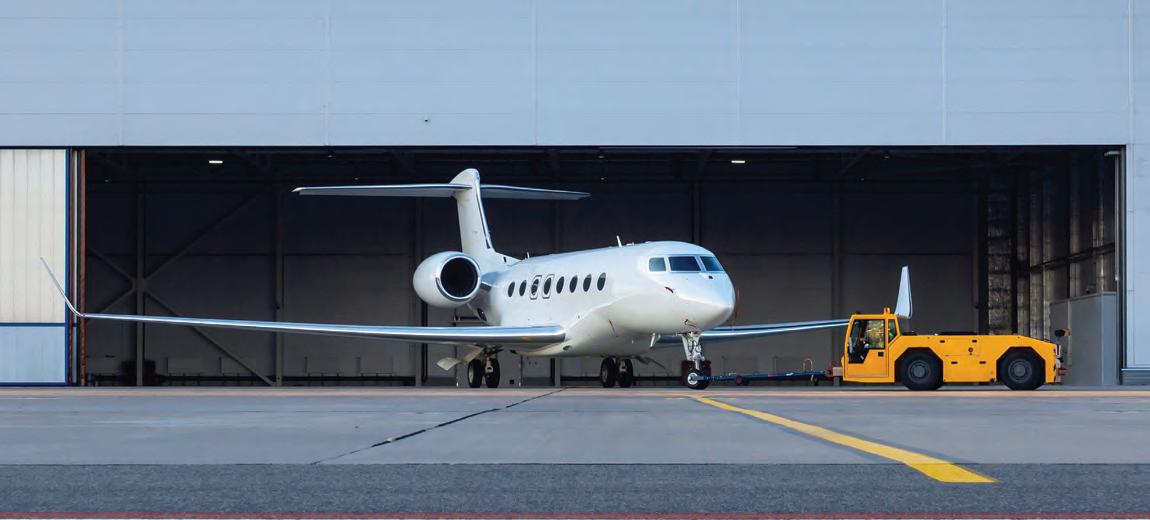
Unpredictable volatility from Washington, D.C., could have far-reaching e ects for the business aviation industry in 2025 and beyond.
For the FBO industry, aircraft movements are its lifeblood, and 2024 proved to be a stable year for business aviation. While the 3,630,600 business jet and turboprop departures in the U.S. were just a percentage point off from the previous year, they were still 23% above pre-pandemic totals, according to data from industry data analyst WingX Advance.
For Europe, departures were down less than 1% from 2023 and still nearly seven points above 2019 numbers. In the Caribbean region, however, business was booming: activity was up by 9.4% last year.
In terms of industry consolidation, while the number of FBO transactions was down from the dizzying heights of recent years, it remains a seller’s market. “While the industry has largely moved on from the record-breaking acquisitions of the two largest chains by private equity in 2021, these transactions captured the imagination of many FBO owners considering
selling the past few years,” said Douglas Wilson, president and senior partner of industry consultancy FBO Partners.
“Those sellers adjusted their valuation expectations accordingly, yet unscientifically.” Those inflated asking prices, higher interest rates, and decreased inventory of highly attractive top-tier locations could all serve to cool down what had been a busy FBO consolidation market. “Adding to the transactional malaise is an unusually large pool of would-be aggregators,” Wilson said.
Over the past few years, players such as Lynx FBO and Ross Aviation were absorbed by Atlantic Aviation, while Tac Air was acquired by Signature Aviation. However, others such as Modern Aviation, Skyservice, AeroCenters, a revamped Odyssey Aviation, and newcomers to the market remain to take their place in the FBO acquisition ecosystem.
While Wilson expects a relatively robust mergers and acquisitions market for 2025,
he cautions that unpredictable volatility from Washington could have far-reaching effects. “The potential loss of thousands of government employees who regulate the industry will slow transactions.”
One major development in the U.S. FBO industry this past year was in the geographic expansion of the sustainable aviation fuel (SAF) supply. While SAF availability had been limited to the West Coast, a series of announcements from producers such as Neste and distributors such as World Fuel Services and Avfuel last year saw it flow steadily eastward as new distribution terminals were established.
With that backdrop, AIN tasked its readers to rate the FBOs they frequent in five categories. To reach the top rungs of facilities worldwide in the survey, it’s not enough for an FBO to score highly in just one or two categories; the top-rated facilities must show consistent quality across all five areas. z
Pentastar Aviation at Detroit-area Oakland County International Airport (KPTK) once again earned the highest score among all aviation service providers worldwide in AIN ’s annual FBO Survey with a score of 4.83, edging out secondplace finisher Modern Aviation at Fort Worth Meacham International Airport (KFTW) by one-tenth of a point. For Pentastar, this represents its fifth consecutive year as the highest ranked FBO as selected by our readers.
The top of the Americas portion of this year’s survey was dominated by Florida and Texas FBOs, with the two states claiming 12 of the 16 top 5% slots between them. New York, California, North Dakota, and Michigan each had one.
Filling out the first five positions in the survey this year were Sheltair Tampa (KTPA), Henriksen Jet Center at Austin Executive Airport (KEDC) in Texas, and Jet Aviation at Palm Beach International (KPBI), which tied with Sheltair at Fort Lauderdale/Hollywood International Airport (KFLL), both in Florida.
Among the remaining 10 FBOs scoring in the top 5%, five celebrated their first time in the top tier of the survey: Sheltair’s facilties, at Orlando Executive (KORL) and Daytona Beach International (KDAB) airports; Astin Aviation in College Station, Texas (KCLL), Desert Jet Center at Jacqueline Cochrane Regional Airport (KTRM) in California, and Million Air at New York’s Westchester County Airport (KHPN).

Oakland County International Airport (KPTK), Pontiac, Michigan
For Pentastar Aviation, one of five FBOs at Detroit-area Oakland County International
Airport, this year’s AIN FBO Survey continues its run as the top- scoring facility, holding that spot either singly or tied for the past five years.
Having just celebrated its 60th anniversary, the company—which traces its origin back to Chrysler’s flight department—was
the only FBO this year to place in the top ten in all five categories: line service (4.86), passenger amenities (4.78), pilot amenities (4.79), facilities (4.80), and CSRs (4.91).
“I think the thing that sets us apart is the consistency with which we approach the highest possible standards,” company
president Brad Bruce told AIN . “We operate on an airfield with much competition, and it is our customer-focused service approach that we have delivered for decades that has built a trust and loyalty with our customers.” To show them its appreciation, the company has instituted monthly customer focus days, during which it offers guests a variety of complimentary treats, running the gamut from soup to (do)nuts.
A full-service FBO, Pentastar offers a range of aviation services, including maintenance, completions, and refurbishment, as well as an aircraft charter and management division, in addition to traditional aircraft handling, fueling, and sheltering.
The Avfuel-branded complex is home to 21 turbine-powered aircraft ranging from a Boeing Business Jet on down. A 22-acre facility, it includes 130,000 sq ft of hangar space and 10 acres of reinforced ramp space, allowing the FBO to handle virtually any size aircraft.
Its main 5,000-sq-ft terminal is undergoing a six-month renovation to “ensure it meets the highest standards of comfort and convenience,” according to v-p of FBO services Ben Hammond. It offers passenger lounges, multimedia-equipped conference rooms, company offices, and Pentastar’s in-house full-service catering kitchen, the Fivestar Gourmet, which has become so successful that, in addition to serving customers at neighboring FBOs, it services other airports in the region.
The FBO also operates the Stargate, a separate satellite 10,000-sq-ft terminal intended to handle large charter aircraft, with its own baggage carousel and what is believed to be the only privately operated jetway in the country.
Modern Aviation
Fort Worth Meacham International Airport (KFTW), Fort Worth, Texas
Growing FBO chain Modern Aviation

purchased the former American Aero FTW location last May, and the highly-regarded facility has lost nothing in the ownership change as one of only two locations to earn a score of 4.78 or higher in every survey category this year. It ranked in the top 10 in four of the five survey categories: passenger amenities (4.82), pilot amenities (4.79), CSRs (4.86), and facilities (4.85).
“Exceptional customer service, a commitment to safety, and a world-class facility are all reasons why our customers have placed us in the top 5% of all FBOs in the AIN survey since 2018,” said general manager Glenn Rack.
That safety culture is amply demonstrated by the FBO being the first in the world to achieve Stage 3 registration under the International Standard for Business Aircraft Handling (IS-BAH) in 2018, signifying a mature and integrated safety management system.
The Avfuel-branded facility has a 31-acre leasehold at KFTW, and its terminal occupies 8,000 sq ft of exclusive space in the airport operations building. No technology was spared in its construction—from white noise speakers embedded in the walls to provide privacy, to automatically dimming windows to blunt the effects of the harsh Texas sun.
The terminal offers three separate passenger lounges (including a separate TSA-secure private lounge with ensuite bathroom and direct ramp access), a wellstocked refreshment bar, crew dining area, pilot lounge with shower facilities, a snooze room with a soundproof one-ton door, a 20-seat conference room, sheltered
parking, complimentary overnight crew cars, and a galley for food preparation.
“Our mission is to provide customers with the best experience every visit,” Rack told AIN. “Every FBO pumps fuel; we set ourselves apart by providing a smooth and effortless experience to our customers that they will remember.”
Despite having 250,000 sq ft of hangar space, plans call for the construction of an additional nearly 100,000 sq ft of aircraft shelter at the facility over the next few years.
Tampa International Airport (KTPA), Tampa, Florida
Sheltair’s Tampa facility began its existence as Tampa International Jet Center before being acquired by the chain in 2016, but in its 18 years of operation, the location—no matter what name—has held a spot in the top rungs of the AIN FBO Survey. This year, it was one of just three FBOs worldwide to earn a score over 4.7 in each of the five survey categories, according to AIN’s readers, placing it among the leaders in four of the five: line service (4.80), passenger amenities (4.76), pilot amenities (4.73), and facilities (4.79).

The Florida-based company has invested heavily in the CAA Preferred location, having recently completed a $1 million-plus renovation to the 12,000-sq-ft two-story terminal that introduced a multitude of improvements to what was already an
FBO AIRPORT CODE 2025 OVERALL AVERAGE CHANGE FROM LAST YEAR
ATLANTA
HILL AIRCRAFT KFTY4.480.02
SIGNATURE FLIGHT SUPPORT KPDK4.400.07
AERO CENTER EPPS
ATLANTA KPDK4.380.01
ATLANTIC AVIATIONKPDK4.15-0.02
SIGNATURE FLIGHT SUPPORT KFTY3.980.03
BOCA RATON/POMPANO BEACH
SHELTAIR KPMP4.630.02
SIGNATURE FLIGHT
SUPPORT KBCT4.26-0.11
ATLANTIC AVIATIONKBCT4.200.03
CHARLESTON
SIGNATURE FLIGHT SUPPORT KCHS4.540.02
ATLANTIC AVIATIONKCHS4.120.01 CHARLOTTE
WILSON AIR CENTERKCLT4.60-0.01
CHATTANOOGA
WILSON AIR CENTERKCHA4.64-0.02
DAYTONA BEACH
SHELTAIR KDAB4.710.05
FORT LAUDERDALE
SHELTAIR KFLL4.750.05
BANYAN AIR SERVICEKFXE4.740.01
NATIONAL JETS KFLL4.58-0.02
FORT LAUDERDALE
EXECUTIVE JET CENTER KFXE4.570.03
JETSCAPE KFLL4.26-0.05
FORT MYERS/NAPLES
BASE OPERATIONS AT PAGE FIELD KFMY4.720.03
NAPLES AVIATIONKAPF4.280.00
PRIVATESKY AVIATIONKRSW4.17-0.05
JACKSONVILLE
SHELTAIR KJAX4.700.03
MEMPHIS
WILSON AIR CENTERKMEM4.70-0.01
SIGNATURE FLIGHT SUPPORT KMEM4.060.02
MIAMI
FONTAINEBLEAU AVIATION KOPF4.540.03
ATLANTIC AVIATONKOPF4.39-0.01
SIGNATURE FLIGHT SUPPORT KMIA4.23-0.02
SIGNATURE FLIGHT SUPPORT KOPF4.220.08
NASHVILLE
ATLANTIC AVIATIONKBNA4.190.04
SIGNATURE FLIGHT SUPPORT KBNA4.11-0.01
NORTHWEST FLORIDA
SHELTAIR KECP4.600.00
ATLANTIC AVIATIONKDTS4.33-0.07
MILLION AIR KTLH4.270.03
impressive facility. It features an airy double- height lobby running from the streetside porte-cochère straight through to the iconic 12,000-sq-ft rampside arrivals canopy, with a refreshment bar, pilot lounge, flight planning area, and a pair of conference rooms.
Open 24/7, the Avfuel-branded location occupies 35 acres at KTPA with a staff of 45. Home to 47 turbine aircraft, the IS-BAH Stage 2-registered complex has 284,000 sq ft of hangar space, including a recent $26 million expansion project consisting of 77,000 sq ft of aircraft shelter along with 32,000 sq ft of office space. Last June, Sheltair broke ground on what will be a 57,000sq-ft MRO facility capable of sheltering aircraft up to a Boeing BBJ. It is expected to be completed by the end of the year.
While many FBOs have warehouses or fuel terminals as neighbors, Sheltair’s KTPA location offers top-tier dining
ORLANDO
SHELTAIR KORL4.730.05
ATLANTIC AVIATIONKORL4.47-0.03
ATLANTIC AVIATIONKMCO4.42-0.06
SIGNATURE FLIGHT SUPPORT KMCO4.29-0.06
RALEIGH/DURHAM
SIGNATURE FLIGHT SUPPORT KRDU3.82-0.07 SARASOTA
ATLANTIC AVIATIONKSRQ4.53-0.01 SAVANNAH
SHELTAIR KSAV4.630.04
TAMPA/ST. PETERSBURG
SHELTAIR KTPA4.770.01
SHELTAIR KPIE4.670.04
SHELTAIR KSPG4.390.06
SIGNATURE FLIGHT SUPPORT KTPA3.95-0.04
WEST PALM BEACH/STUART
JET AVIATION KPBI4.750.02
ATLANTIC AVIATIONSTUART JET CENTER KSUA4.55-0.02
APP JET CENTERKSUA4.540.06
SIGNATURE FLIGHT SUPPORT KPBI4.420.01
ATLANTIC AVIATIONKPBI4.360.03
FBOs with same score are listed in alphabetical order
options within walking distance from the front door in an upscale urban shopping district. Also, Raymond James Stadium (home to the NFL’s Tampa Bay Buccaneers) abuts the airport property, allowing the FBO to shuttle passengers heading there for football games or concerts to an airport side gate within walking distance of the stadium’s entrance.
Austin Executive Airport (KEDC), Austin, Texas
For the eighth consecutive year, Henriksen Jet Center, the FBO at the privately owned Austin Executive Airport, has placed in the top 5% of all FBOs, according to AIN’s readers. The facility landed in the top 10 in the pilot amenities and facilities categories with scores of 4.78 and 4.84, respectively, and shared the highest score in this year’s survey in the passenger amenities category (4.83).

Like its older sister at Houston Executive Airport (KTME)—which also landed in the top 5% this year—it is a Paragon Aviation Group member and, as in Houston, the company owns both the airport and the FBO in Austin.
One of the popular features of the KEDC facility is its massive 15,000-sq-ft aircraft arrivals canopy, which can accommodate up to a Boeing Business Jet-class aircraft and ease the aircraft’s air conditioner burden from Texas’ blazing sun.
The 21,500-sq-ft terminal features a modern two-story glass-sheathed lobby.
On display is an Olympus engine from the former Concorde jetliner, along with a restored 1914 Indian motorcycle in a glass case. Amenities include a pilot lounge with quiet rooms equipped with the latest in massage chairs, shower facilities, luxurious theater room with stadium seating, and 12-seat conference room. The upstairs level is leased to tenants.
The Phillips 66-branded location, which is staffed 24/7, has half a million sq ft of ramp space along with more than 200,000 sq ft of hangar space, and it is home to 54 based jets and turboprops.
During one weekend in October, when the Texas capital hosted not only a key college football game but the Formula 1 United States Grand Prix as well, KEDC saw the busiest three-day weekend in its history, handling more than 400 turbine aircraft operations, according to airport executive director Andrew Perry.
Palm Beach International Airport (KPBI), West Palm Beach, Florida
Jet Aviation’s facility at Florida’s Palm Beach International Airport has been a fixture there since 1985, and it is perennially the global chain’s highest-scoring location in AIN’s annual FBO Survey.
A member of the Air Elite Network of upscale FBOs, the facility’s main 18,000sq-ft two-story terminal just completed an interior renovation project. It is open 24/7 and features passenger lounges, refreshment bar, pilot lounge, snooze room, flight planning area, shower facilities, conference room, concierge and crew cars, courtesy shuttles, and onsite car rental. It is an approved gateway to Ronald Reagan Washington National Airport under the TSA’s DCA Access Standard Security Program (DASSP), and like all other Jet Aviation facilities, it is IS-BAH registered. At KPBI, the CAA-preferred FBO
shares a secondary 7,000-sq-ft terminal with sister company Gulfstream, along with a 40,000-sq-ft hangar that brought the facility—home to 55 turbine-powered aircraft—up to 200,000 sq ft of space capable of accommodating bizliners such as the BBJ and ACJ. For outside aircraft parking, it also has more than a half-million sq ft of ramp space in its 25-acre leasehold.
The Phillips 66-branded location— open 24/7 with a staff of 64—received its highest scores this year (4.81) in the customer-facing areas of line service and CSRs. “The customer is at the heart of everything we do,” explained general
BATTLE CREEK
DUNCAN AVIATIONKBTL4.390.00
CHICAGO
HAWTHORNE GLOBAL
AVIATION SERVICES KPWK4.680.01
ATLANTIC AVIATIONKPWK4.600.05
J. A. AIR CENTERKARR4.59-0.02
B COLEMAN AVIATIONKGYY4.520.01
SIGNATURE FLIGHT SUPPORT KPWK4.430.01
CINCINNATI
SIGNATURE FLIGHT SUPPORT KLUK3.900.00
CLEVELAND
ATLANTIC AVIATIONKCLE3.87-0.03
COLUMBUS
LANE AVIATION KCMH4.16-0.09
SIGNATURE FLIGHT SUPPORT KCMH3.89-0.03
DETROIT
PENTASTAR AVIATIONKPTK4.830.02 INDIANAPOLIS
MILLION AIR KIND4.53-0.01 JET ACCESS INDIANAPOLIS EXECUTIVE AIRPORT (FORMERLY FIRST WING JET CENTER) KTYQ4.240.02
SIGNATURE FLIGHT SUPPORT KIND3.890.02
LEXINGTON/LOUISVILLE
SIGNATURE FLIGHT SUPPORT KLEX4.530.05
ATLANTIC AVIATIONKSDF4.360.11
MILWAUKEE
SIGNATURE FLIGHT SUPPORT KMKE4.36-0.04
FBOs with same score are

AVIATIONKCRQ4.56-0.05
manager Steven Schrammel. “The team in Palm Beach really takes this to heart and is dedicated to creating a personalized experience for all of our customers, built on the highest standards of safety and service.” He added that his staff is empowered to make quick, informed decisions to prioritize safety and custome r service.
Sustainability is a key focus at the facility, which began offering continuous supplies of sustainable aviation fuel in January. Other environmentally friendly features include low-flow water fixtures, a white roof to reflect heat, and low-energy LED lighting throughout the
FBO AIRPORT CODE 2025 OVERALL AVERAGE CHANGE FROM LAST
AUSTIN/SAN ANTONIO
HENRIKSEN JET CENTER KEDC4.760.04
MILLION AIR KAUS4.690.06
MILLION AIR KSAT4.580.00
ATLANTIC AVIATIONKAUS4.25-0.04
SIGNATURE FLIGHT SUPPORT - NORTH TERMINAL KSAT4.24-0.07
COLLEGE STATION
ASTIN AVIATION KCLL4.724.72
DALLAS/FORT WORTH
MODERN AVIATION (FORMERLY AMERICAN AERO) KFTW4.820.03
BUSINESS JET CENTERKDAL4.700.00
GALAXY FBO KADS4.69-0.05
TEXAS JET KFTW4.670.01
MCKINNEY AIR CENTERKTKI4.62-0.06
HOUSTON
HENRIKSEN JET CENTER KTME4.740.00
GALAXY FBO KCXO4.710.01
GLOBAL SELECTKSGR4.680.00
MILLION AIR KHOU4.670.03 JET AVIATION HOUSTON KHOU4.44-0.01
LITTLE ROCK
SIGNATURE FLIGHT SUPPORT KLIT4.06-0.03
NEW ORLEANS
FLIGHTLINE FIRSTKNEW4.33-0.06
ATLANTIC AVIATIONKMSY4.19-0.04
SIGNATURE FLIGHT SUPPORT KNEW4.18-0.04
OKLAHOMA CITY
ATLANTIC AVIATIONKOKC4.620.00
FBOs with same score are listed in alphabetical order
facility. Outside, landscaping was designed with drought-resistant plants and heatreducing tarmac.
Fort Lauderdale–Hollywood International Airport (KFLL), Fort Lauderdale, Florida
The second of four Sheltair FBOs to take a bow in the top 5% of the rated FBOs in AIN ’s survey, Fort Lauderdale moved up in the rankings with an improved score of 4.75. And this followed a top 5%
DES MOINES
MODERN AVIATIONKDSM4.41-0.04
FARGO
FARGO JET CENTERKFAR4.710.08
KANSAS CITY
ATLANTIC AVIATIONKMKC4.61-0.03
SIGNATURE FLIGHT SUPPORT KMKC3.79-0.12
LINCOLN
ATLANTIC AVIATIONKLNK4.500.02
DUNCAN AVIATIONKLNK4.280.01
MINNEAPOLIS/ST. PAUL
SIGNATURE FLIGHT SUPPORT KSTP4.620.01
SIGNATURE FLIGHT SUPPORT KMSP4.46-0.03
ST. PAUL FLIGHT CENTER KSTP4.380.03
PREMIER JET CENTERKFCM4.340.04
ELLIOTT AVIATIONKFCM4.11-0.01
OMAHA
REVV AVIATION KCBF4.29-0.01
TAC AIR KOMA4.23-0.04
ST. LOUIS
AERO CHARTER, INCKSUS4.640.01 MILLION AIR KSUS4.510.02
SIGNATURE FLIGHT SUPPORT KSUS4.30-0.07
SIGNATURE FLIGHT SUPPORT KSTL3.810.01 WICHITA
YINGLING AVIATIONKICT4.480.01
SIGNATURE FLIGHT SUPPORT KICT4.310.00
FBOs with same score are listed in alphabetical order
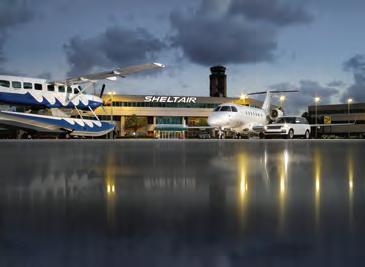
placement last year at 4.70.
Not resting on its laurels, Sheltair-FLL has remained busy with updates at its facilities built in 1989 in South Florida. At its U.S. Customs and Border Protection terminal, Sheltair repainted and refurnished the interior and upgraded its restrooms and elevators. Additionally, the main FBO facility’s second and third floors were updated, as were the firstfloor restrooms.
This year, plans call for repainting of its building exteriors, along with a refresh of the 9,750-sq-ft first floor of the threestory main FBO. Also still ahead are new duty-free shops in both buildings and new HVAC systems.
Garnering strong scores of 4.72 (top 10) for pilot amenities, 4.71 for passenger amenities, and 4.78 for facilities, Sheltair-FLL’s main terminal offers features such as a fitness room with a cedar-lined sauna and a designated lounge for charter customers, a quiet area for guests beyond its main FBO lobby—the busiest in the Sheltair network. Located next to the main FBO building, the second building is one of the few in the region to feature around-the-clock customs services.
A staff of 53 keeps the FBO running 24 hours a day, seven days a week, with another five employees working in its properties department. The Tier 2 IS-BAH-registered facility provides comprehensive monthslong line service training with a focus on working in a fast-paced environment and navigating through potentially hazardous situations. Reflecting all of this, Sheltair KFFL drew a 4.73 rating for line service.
15 - 17, 2025

“The AIN CALS event has been a refreshing experience for leaders within the corporate aviation community and the vendors that support their businesses. 100% engagement for 2.5 days. Truly a working event that leaves us all a bit tired but very enthused!”
– 2024 CALS FLIGHT DEPARTMENT ATTENDEE
“The AIN CALS event provides excellent opportunities for high level interaction between vendors and clients. The one-on-one time and small group sessions are very valuable settings.”
– 2024 CALS SPONSOR

This environment includes handling the crowds arriving for events such as the Fort Lauderdale International Boat Show, Formula 1 Miami, the World Cup, the Men’s Cricket World Cup, and the Orange Bowl.
Sheltair says it strives to personalize guest experiences with a “Family First. Fuel. Build. Serve.” mantra. This mission was reflected in its 4.80 score for its customer service representatives.
Ten additional locations rounded out the top 5% of FBOs worldwide in the survey this year. Half have previously placed within the top tier, while the remaining five are making their debut there this year.
Garnering scores of 4.74 were Banyan Air Service at Florida’s Fort Lauderdale
SKYSERVICE CYYC4.47-0.04 MONTREAL
LUX FBO CYHU4.690.01
SIGNATURE FLIGHT SUPPORT CYUL4.560.04
SKYSERVICE CYUL4.410.01 TORONTO
SKYSERVICE CYYZ4.61-0.02
SIGNATURE FLIGHT SUPPORT CYYZ3.530.04 VANCOUVER
SKYSERVICE VANCOUVER CYVR4.400.08
FBOs with same score are listed in alphabetical order
CARIBBEAN
FBO AIRPORT CODE 2025 OVERALL AVERAGE CHANGE FROM LAST YEAR
ST. THOMAS
STANDARD AVIATIONTIST4.640.04
PROVIDENCIALES
PROVO AIR CENTERMBPV4.580.01 NASSAU
ODYSSEY AVIATIONMYNN4.380.02
JET NASSAU MYNN4.09-0.03
FBOs with same score are listed in alphabetical order
FBO AIRPORT CODE 2025 OVERALL AVERAGE CHANGE FROM LAST YEAR
ALBANY
MILLION AIR KALB4.570.02
BALTIMORE
SIGNATURE FLIGHT SUPPORT KBWI4.08-0.02
BOSTON
JET AVIATION KBED4.27-0.01 ATLANTIC AVIATIONKBED4.260.00
SIGNATURE FLIGHT SUPPORT KBED4.020.03
SIGNATURE FLIGHT SUPPORT KBOS3.57-0.02
BURLINGTON HERITAGE AVIATIONKBTV4.59-0.01 HARTFORD
SIGNATURE FLIGHT SUPPORT KBDL4.30-0.04
LONG ISLAND
MODERN AVIATIONKISP4.550.09
MODERN AVIATIONKFOK4.500.05
MODERN AVIATIONKFRG4.460.02
ATLANTIC AVIATIONKFRG4.13-0.08 MAINE
NORTHEAST AIRKPWM4.610.00
BANGOR AVIATION SERVICES KBGR3.930.00
NEW YORK CITY
MILLION AIR KHPN4.710.07
SIGNATURE FLIGHT SUPPORT (FORMERLY MERIDIAN) KTEB4.65-0.02
JET AVIATION KTEB4.470.01
SIGNATURE FLIGHT SUPPORT - SOUTH TERMINAL KTEB4.380.01
SIGNATURE FLIGHT SUPPORT KMMU4.310.06
PHILADELPHIA
ATLANTIC AVIATIONKPHL4.030.00 PITTSBURGH
ATLANTIC AVIATIONKPIT4.52-0.01
ATLANTIC AVIATIONKAGC4.14-0.10
WASHINGTON D.C.
SIGNATURE FLIGHT SUPPORT KDCA4.42-0.01
APP JET CENTERKHEF4.290.00
JET AVIATION KIAD4.25-0.01
SIGNATURE FLIGHT SUPPORT KIAD4.23-0.03
FBO AIRPORT CODE 2025 OVERALL AVERAGE CHANGE FROM LAST YEAR
SAO PAULO
EMBRAER FBO SDCO4.610.00
WORLD-WAY AVIATIONSDCO4.550.00
LIDER AVIACAO SBSP3.74-0.02
FBOs with same score are listed in alphabetical order
KJAC3.66-0.03
AVIATIONKDVT4.430.05 ATLANTIC AVIATIONKSDL4.420.00
FLOWER AVIATIONKPUB4.470.04 SALT LAKE CITY SIGNATURE FLIGHT SUPPORT KSLC4.43-0.01
Executive Airport (KFXE) and Henriksen Jet Center’s second Texas location at Houston Executive Airport (KTME).
Sheltair* at Florida’s Orlando Executive Airport (KORL) earned a score of 4.73, while Astin Aviation*, the lone service provider serving Easterwood Field Airport (KCLL) in College Station, Texas,
received a score of 4.72, the same as airport- operated Base Operations at Page Field (KFMY) in Fort Myers, Florida.
There were five FBOs tied with a score of 4.71: Desert Jet Center*, at Jacqueline Cochran Regional Airport (KTRM) in Palm Springs, California; Fargo Jet Center, Hector International Airport (KFAR)
in Fargo, North Dakota; Galaxy FBO at Houston-area Conroe-North Houston Regional Airport (KCXO); Sheltair* at Daytona Beach International Airport (KDAB) in Florida; and, at New York’s Westchester County Airport (KHPN), Million Air*, which was the highest-placed FBO in the Northeast U.S.
In its annual FBO survey, AIN’s readers evaluate hundreds of aircraft handling facilities worldwide on a one-to-five scale in five categories: line service, passenger amenities, pilot amenities, facilities, and CSRs. The survey divides the globe into two segments, the Americas and the “Rest of World” (RoW). For the latter, the UK’s Farnborough Airport again earned the highest accolades in the survey, as it has virtually since the day it opened more than two decades ago, with a 4.66 score overall this year. It also garnered the top grade among all facilities worldwide in the facilities category with a 4.86.
The London area was well represented with quality locations taking the three top spots for the segment, including
Harrods Aviation (4.60) and Universal Aviation (4.56) at Stansted Airport (EGSS).
Outside of the European FBOs, global aviation services provider ExecuJet’s facility at Sydney Kingsford Smith Airport (YSSY) took the highest rating in the segment (4.55), followed by Signature Munich (EDDM), which was the mega-chain’s top-scoring location (4.54) beyond the U.S.
Also among the top performers in this year’s survey were Jet Aviation’s location at Amsterdam Schiphol Airport (EHAM) at 4.51 and Mjets FBO at Don Mueang International Airport in Bangkok (VTBD) at 4.46.

(EGLF), Farnborough, UK
Farnborough Airport once again was the highest-ranked FBO outside of North America, and private owner Macquarie has relentlessly invested in the London-area gateway since acquiring it in 2019. The opening of the new Domus III four-bay hangar complex last year is the most visible proof of this commitment, increasing available hangar space by 70% to a total of 415,000 sq ft. Space aside, the new structure, which cost around $70 million to build, also reflects the company’s strong commitment
to meeting its ambitious net-zero carbon targets, with features such as automatic daylight dimming of lights, translucent doors to maximize natural light, energyefficient heating, and a system that “harvests” rainwater. These innovations include 4,000 solar panels installed on the hangar roofs by UK specialist Solivus and electric ground vehicles.
The location’s 52,000-sq-ft, three-story terminal led all FBOs globally in the facilities category with a score of 4.86, and it placed among the top performers for passenger amenities (4.77) and pilot amenities (4.74). It features VIP customer lounges that can accommodate high-volume flights,
conference rooms, crew lounge and snooze rooms, work area, passenger and crew shower facilities, laundry service, concierge, and gymnasium. Drive-through customs and immigration clearance is available along with the on-airport Aviator Hotel.
Macquarie’s investments have continued to lure other companies to the expansive business aviation enclave, with Flexjet having picked Farnborough for its European Tactical Control Center. There are now more than 50 companies based at the 117-year-old airfield, and 76 aircraft call it home.
Recognizing that the skills and attitudes of its people are equally important
Here the whole ecosystem comes together to connect, share and shape the future of European Business Aviation. There’s nowhere better for exhibitors to go to market or for visitors to gain knowledge and experience new products or services. And don’t miss the plentiful opportunities to network with the community, hear insights from thought-leaders and reach new customers.
Tickets available at ebace.aero




ingredients in the airport’s secret sauce, Farnborough has made a strong commitment to recruiting and training local staff, with more than 400 people now on its books (not including those employed by other service providers). More than 80% of staff reside within a 10-mile radius, and the airport has forged partnerships with the local Farnborough College to support training in aviation-specific
JET AVIATION EDDL4.380.03
GENEVA
JET AVIATION LSGG4.43-0.01
SIGNATURE FLIGHT SUPPORT LSGG4.420.01 LISBON
OMNI HANDLINGLPPT4.330.02 LONDON
FARNBOROUGH AIRPORT EGLF4.66-0.01
HARRODS AVIATIONEGSS4.600.06
UNIVERSAL AVIATIONEGSS4.56-0.05
HARRODS AVIATIONEGGW4.440.02
MUNICH
SIGNATURE FLIGHT SUPPORT EDDM4.540.05
PARIS
ADVANCED AIR SUPPORT LFPB4.270.03
SIGNATURE FLIGHT SUPPORT - TERMINAL 1 LFPB4.240.12
SIGNATURE FLIGHT SUPPORT - TERMINAL 3 LFPB4.21-0.01
UNIVERSAL AVIATIONLFPB4.16-0.03
DASSAULT FALCON SERVICES LFPB4.15-0.01
JETEX LFPB3.96-0.01 SARDINIA
ECCELSA AVIATONLIEO4.45-0.04
SOUTHERN FRANCE
SIGNATURE FLIGHT SUPPORT LFMN4.11-0.05
SKY VALET CANNESLFMD4.04-0.05
SWISSPORT EXECUTIVELFMN4.010.00
AVIAPARTNER EXECUTIVE LFMN3.97-0.02
STOCKHOLM
GRAFAIR JET CENTERESSB4.420.02
ZURICH
JET AVIATION LSZH4.410.07
FBOs with same score are listed in alphabetical order
skills, including ground operations and maintenance.
London Stansted Airport (EGSS), UK Harrods Aviation Stansted was the next highest placing FBO in the “Rest of World” segment this year, repeating its standing from a year ago. In 2023, the company purchased Fayair, a rival service provider at EGSS, and now operates the two locations simultaneously, dubbing its original location—which celebrates its 30th anniversary this year—as Harrods Aviation-The Knightsbridge and the newer location as The Brompton. The latter is currently undergoing a remodel of its customer areas with design partner BoConcept. Both facilities are designed to cater to large-scale operations as well as private, discreet travel. “The Knightsbridge, for example, can seamlessly accommodate a commercial charter flight of over 100 passengers,” explained Harrods Aviation managing director Paul Norton, adding that the facility typically receives the larger headof-state aircraft. “The Brompton, while equally capable of handling aircraft of all sizes, is often used for mid- and largecabin business jets.” Combined, the two FBOs provide more than 100,000 sq ft of hangar space capable of sheltering aircraft up to a Boeing 757. Now, the company is in the process of upgrading its fuel truck fleet, having just received its first new bowser with two more on order.
Offering two full-service terminals at EGSS, Harrods offers onsite security, customs, and immigration clearance; a conference room; passenger and pilot lounges; a work area; gym; and driver rest areas with private vehicle ramp access and crew transfers. The company is the first (and thus far only) UK location to achieve Stage 3 registration under IBAC’s International Standard for Business Aircraft Handling (IS-BAH).

This year, the facilities earned their highest score (4.70) in the customer service category, and Harrods has an extensive in-house training program for both its CSR and line staff. “Our customer service philosophy is centered on delivering understated, quiet luxury with impeccable, personalized service that exceeds expectations,” said Nathan Farrow, head of customer experience for Harrods Aviation. “Our commitment is to ensure that every individual who walks through our doors feels valued, cared for, and immersed in an experience that is both effortless and memorable.”
London Stansted Airport (EGSS), Stansted, UK
Universal Aviation’s facility at London Stansted Airport is one of the longestestablished FBOs in the UK, having celebrated its 40th anniversary last year. A perennial top finisher in the “Rest of World” segment, the location is part of the ground handling arm of Texas-based Universal Weather and Aviation, and this year it earned its highest score (4.74) in the customer service category, followed by a 4.71 in line service.
“We are known for our strong will and determination to always get the best for our customers,” said Sean Raftery, the company’s managing director for the UK and Ireland, who has been with the facility for more than three decades. “Our role is to support our customers’ missions by helping them navigate through any flight-related complexities, help them drive
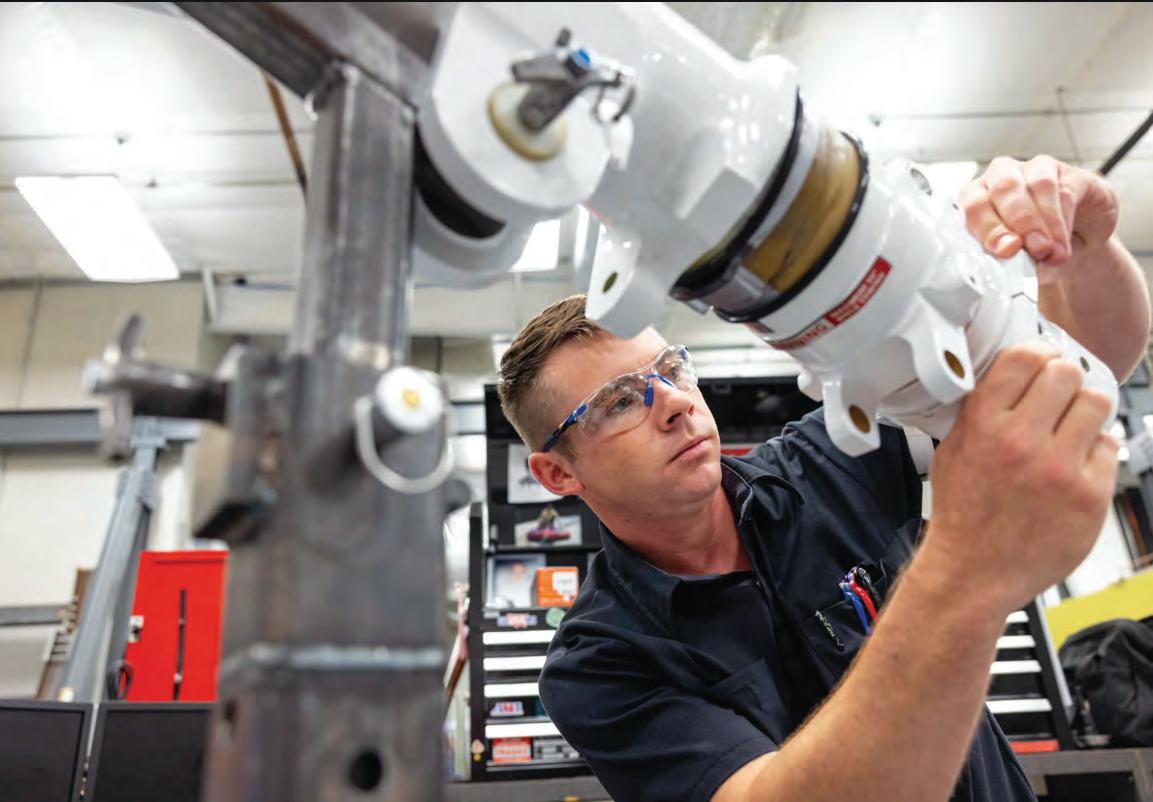
April 29-May 1, 2025 • Columbus, OH
The 2025 NBAA Maintenance Conference is the premier event for business aviation maintenance professionals, offering a unique opportunity for attendees to enhance their skills and take their careers to the next level.
With expert-led education sessions, insights into industry best practices and an exhibit hall showcasing the latest equipment and technology, this is a can’t-miss event to stay ahead in the evolving field of aviation maintenance. From aircraft technicians to directors of maintenance, this event is designed to provide all attendees with the tools they need to succeed. The future of aviation maintenance starts here – don’t miss out and make plans to attend today!


down their operating risks, and reduce their stress.”
The two-story 11,000-sq-ft FBO is equipped with a crew business center, crew and VIP lounges, shower facilities, and conference rooms that have proven so popular that reservations are recommended, according to Raftery. Customs and immigration services are available onsite, and in accordance with new government regulations, the company has upgraded its security screening suite with new equipment.
With 40 team members at EGSS, the facility operates from 7 a.m. to 10 p.m.
FBO AIRPORT CODE 2025 OVERALL AVERAGE CHANGE FROM LAST YEAR
BANGKOK
MJETS FBO VTBD4.460.00
SYDNEY
EXECUJET AUSTRALIAYSSY4.550.03
JET AVIATION YSSY4.450.13
BEIJING
UNIVERSAL AVIATION / CJET ZBAA3.31-0.05
HONG KONG
HONG KONG BUSINESS AVIATION CENTER VHHH4.440.03
SINGAPORE
UNIVERSAL AVIATIONWSSL4.250.02
JET AVIATION WSSL4.190.20
FBO AIRPORT CODE 2025 OVERALL AVERAGE CHANGE FROM LAST YEAR
DUBAI
EXECUJET MIDDLE EAST OMDB4.360.05
JET AVIATION OMDB4.19-0.05
FBOs with same score are listed in alphabetical order
but, upon request, can be available during extended hours. It has achieved Stage 2 registration under IBAC’s IS-BAH voluntary safety standard-based program, with its Stage 3 audit slated for May.
The facility has 40,000 sq ft of private ramp space, with access to several hangars that can house aircraft the size of Boeing Business Jets or Airbus Corporate Jets.
Raftery noted that last year was another record-breaking year of activity at the FBO. “The Paris Olympics kept us busy at Stansted, which is a great place to reposition to when parking in Paris is full. A short, drama-free hop across the channel.”
Sydney Kingsford Smith Airport (YSSY), Sydney, Australia
ExecuJet, the ground handling arm of the Luxaviation Group, operates FBOs all around the world except for North America, but its facility at Australia’s Sydney Kingsford Smith Airport is the one that turned up among the top-rated international service providers in AIN’s FBO Survey for the eighth straight year. The facility is nearing its 50th anniversary in operation and has been an ExecuJet location for more than half that span.
“Being part of a truly global aviation company allows us as an FBO to leverage the skills and expertise of colleagues around the world,” said Matthew Guy, the company’s regional FBO manager for ExecuJet’s Asia-Pacific region. “There is a constant flow of ideas and knowledge across our network, and I believe the clients feel this

when they travel to one of our facilities.”
The YSSY facility has a two-story, 3,230sq-ft terminal, which was recently remodeled by a luxury design firm, elevating its elegance and comfort. Passenger and crew lounges are included in the building, as well as onsite CIQ services, a trio of conference rooms, and a catering preparation kitchen.
ExecuJet’s leasehold includes 43,000 sq ft of aircraft parking with direct lounge access and enough hangar space to accommodate a pair of Bombardier Global 7500s. The FBO is home to nine based aircraft and hosts between five and 15 visiting aircraft at any given time.
“The size of aircraft requested for charter are smaller, particularly for domestic sectors,” Guy told AIN, adding that the based aircraft are growing larger. As an example, he noted that eight Bombardier Global 7500s are now based in Australia and New Zealand. “This is a huge percentage of the total number of this aircraft type compared to the size of the region’s business aviation industry.”
ExecuJet’s Sydney FBO was the global chain’s first location to achieve Stage 3, the highest level of IBAC’s IS-BAH voluntary safety standard-based program. With 25 employees, it is open from 6 a.m. until 10 p.m. and after hours upon request. It earned its highest score this year (4.75) in the CSR category. “Our philosophy is simple,” said Guy. “We welcome every visitor into our facility as if we are welcoming them into our home.”
Munich Airport (EDDM), Munich, Germany
Signature Flight Support at Munich International Airport (EDDM) once again earned the highest score for any of the FBO chain’s locations outside of the Americas. The German facility scored highest in the CSR category with a 4.77 average score. Explaining his team’s customer service philosophy, general manager Oliver Trono
told AIN, “We want all our guests to feel at home. Our job is to anticipate guests’ needs, make their life easy, and their journey through us stress-free. If there is something we cannot get for them, we will find an alternative. ‘No’ does not exist.”

Like most FBOs in Europe, Signature Munich resides in the general aviation terminal (GAT), occupying 5,400 sq ft of space on two levels. Amenities include a refreshment bar with soft drinks, “bestin-world” beer, coffee, local snacks, and, during the summer months, ice cream. The facility features a crew lounge with showers and snooze room, onsite customs and immigration clearance, two conference rooms, business center, and recreation room with foosball and pool tables. It also has a fleet of vehicles, including a 7 Series BMW limousine for passenger and crew ground transfers.
Normal operating hours are from 6 a.m. to 10 p.m., in coordination with the airport’s overnight curfew. In cases of approved late operations, after-hours service is available. All hangar space at EDDM is managed by the airport authority and is assigned on a “first come, first served” basis. The airport can provide shelter for ultra-long-range business jets.
Two other FBOs in the “Rest of World” segment scored in the top 20% of all facilities worldwide in this year’s survey: Jet Aviation at Schiphol Airport (4.51) in Amsterdam and Mjets FBO at Don Mueang International Airport (4.46) in Bangkok.
The AIN FBO Survey once again is recognizing FBOs demonstrating the most improvement from last year. We chose to profile one such FBO in this category, Sheltair, which led the Americas in the category. Globally, Jet Aviation at Seletar Airport (WSSL) led improvements, raising its score by .20 to 4.19.
Melbourne Orlando International Airport (KMLB), Melbourne, Florida Sheltair at Melbourne Orlando International Airport showed the highest incremental improvement of Americas FBO locations in this year’s AIN FBO Survey, rising by .16 from last year.
In 2021, Sheltair acquired the facility, the lone full-service provider at KMLB. “That does not mean we have it easy,” stated Connor Fichtner, the chain’s director of marketing. “The Sheltair KMLB team upholds the same standards of service that can be found at any Sheltair location, regardless of the competition on the field.”
Since then, the Florida-based company has been steadily upgrading the FBO, having recently completed an interior refresh of the 11,200-sq-ft single-story terminal with new paint and furniture.

But not all the improvements are visible. Fichtner credits the facility’s transition to the X1 FBO management software system for “increased efficiency and service level between flight crews and customer service.” Additionally, the location has adopted a new asset management and compliance software.
The Avfuel-branded facility has more than 11 acres of ramp, along with 52,000 sq ft of hangar space that can house the
latest ultra-long-range business jets. A new 34,500-sq-ft T-hangar complex on the opposite side of the field came online last month.
Home to a dozen turbine-powered aircraft, the FBO regularly handles large aircraft such as the Antonov AN-124 and the C-5 Galaxy. “With KMLB’s main runway being almost two miles long, there is plenty of space for large cargo aircraft,” Fichtner told AIN.
The below FBO sta members were recognized for going “Above & Beyond” in the field of customer service.
Julie McVeyKellerman Customer Service Representative AERO CHARTERKSUS
Shelby Atwell Customer Service Representative AERO-ONE AVIATION KDHN
Brittany BrawnerGeneral Manager ALLIANCE AVIATION SERVICES KAFW
Jessica Blakeslee Customer Service Representative Lead ASTIN AVIATIONKCLL
Barry Smith Lead Line Service Technician ATLANTIC AVIATION KAGC
Laura Gish Client Relations Manager ATLANTIC AVIATION KSDL
Dale Whelan Customer Operations Manager B. COLEMAN AVIATION KGYY
Abbigale Grensing Customer Experience Specialist BANYAN AIR SERVICE KFXE
Blanca Davila Customer Service Specialist BASE OPERATIONS AT PAGE FIELD KFMY
Richlin LeeBrand Ambassador BUSINESS JET CENTER KDAL
Estrella FloresHospitality Manager CARLSBAD JET CENTER KCRQ
Amanda Angel Lead Client Service Representative CLAY LACY AVIATION KVNY
Ashley SchweitzerClient Service Manager CLAY LACY AVIATION KSNA
Kerrie Kiefer Customer Service Manager CUTTER AVIATIONKABQ
Kristina Urbano Customer Service Supervisor CUTTER AVIATIONKPHX
Ethan Dirifo Business Development Assistant DASSAULT FALCON SERVICES LFPB
Peni Nelson Customer Relations Advisor DESERT JET CENTER KTRM
Francesco CossuCEO ECCELSA HANDLING LIEO
Dawndi Ulmer Customer Service Manager FARGO JET CENTER KFAR
Chloe Plante Customer Service Representative FONTAINEBLEAU AVIATION KOPF
Lisa Peterson FBO Experience Manager GALAXY FBOKADS
David Chitwood Line Service Technician GLOBAL SELECTKSGR
Nathan Farrow Head of Customer Experience HARRODS AVIATION EGSS
Kathleen McGrew Customer Service Representative HAWTHORNE GLOBAL AVIATION KTCL
Ysabella Tetley Customer Service Manager HENRIKSEN JET CENTER KTME
Bernie Spencer Customer Service Representative HERITAGE AVIATION KBTV
Jacky Ho Line Service Supervisor HONG KONG BUSINESS AVIATION CENTER VHHH
Troy Maliepaard FBO Operations Supervisor JET AVIATIONEHAM
Tim Vallowe Director of FBO Services JET AVIATIONKSDL
Gabriela Pfulg Senior Manager of FBO Services JET AVIATIONLSGG
João Martins V-P of FBO Operations Europe JET AVIATIONLSZH
Pierre TremblaySales ManagerLUX FBOCYHU
Nelly Popov Customer Service Representatitve MAC JETSKPWM
Marcus CooperFlight Line Specialist MCKINNEY AIR CENTER KTKI
Amy Vasquez Customer Service Manager MILLION AIRKAUS
Carina GonzalesGeneral ManagerMILLION AIRKSAT
Corinne Salinas Customer Service Representative MILLION AIRKADS
Kamila Sypniewski Customer Service Manager MILLION AIRKHPN
Susan UhlsGeneral ManagerMILLION AIRKIND
Celine Cannizzaro Customer Service Manager MODERN AVIATIONKFOK
Aleem MohammedGeneral ManagerMODERN AVIATIONKFRG
Rebecca Taveira Customer Service Manager MODERN AVIATIONKISP
Antonella Lombardi Customer Service Manager MODERN AVIATIONKJFK
Angela ThurmondGeneral Manager MODERN AVIATION (FORMERLY AMERICAN AERO) KFTW
Jason GrayLine Technician MONTEREY JET CENTER KMRY
Cathy Frank Customer Service Representative NAPLES AVIATIONKAPF
Ricky VigueGeneral ManagerNORTHEAST AIRKPWM
Margarida Silva Ground Operations Supervisor OMNI HANDLINGLPFR
Meghan Burns Customer Service Representative PENTASTAR AVIATION KPTK
Dominick DeDominicis Operations Manager PRIVATESKY AVIATION SERVICES KRSW
Monica OtinSenior Concierge PROVO AIR CENTER MBPV


Yascara Sanchez Customer Service Representative SHELTAIRKLAL
Ashley Rainer Customer Service Manager SHELTAIRKBJC
Erika EstradaGeneral ManagerSHELTAIRKDAB
Ciara Read Customer Service Manager SHELTAIRKFLL
Valentina Valles Customer Service Manager SHELTAIRKORL
Leigh KendziorskiGeneral ManagerSHELTAIRKSAV
Amanda Andrix Customer Service Manager SHELTAIRKTPA
Betsy Wines Director of Customer Relationships SIGNATURE AVIATION KTEB
Emily Cornatzer Customer Service Representative SIGNATURE FLIGHT SUPPORT KBFI
Victor Seda Customer Service Manager SIGNATURE FLIGHT SUPPORT KTEB
Karin Boucher Customer Service Supervisor SKYSERVICECYUL
Note: Titles and locations of Above & Beyond honorees are as of 2024.
Je Carbray Manager FBO Operations and Facilities SKYSERVICECYYC
Solange Videria Customer Service Supervisor SKYSERVICE VANCOUVER CYVR
Will FosterHospitality Manager SONOMA JET CENTER KSTS
Aquino BonelliGeneral Manager STANDARD AVIATION TIST
Michael LeonOperations ManagerSUMMIT AVIATIONKVBT
Rosemary Zavala Customer Service Manager SUN VALLEY AVIATION KHRL
Rita Tam General Manager, Macau FBO TAG AVIATIONVMMC
Holly Hopkins Customer Relations Manager TEXAS JETKFTW
Judi Rodriguez Airport Station Manager JBQ UNIVERSAL AVIATION MDJB
Gavin DyerConcierge WILSON AIR CENTER KCLT
Kimberly Boyle Customer Service Manager WILSON AIR CENTER KMEM
This report on AIN’s FBO survey covers fixed-base operations in the Americas as well as in the Rest of World categories.
History AIN has been conducting surveys since 1981, asking about the service that FBOs provide their customers and reporting the results annually. Initially, we sent out a paper survey questionnaire by mail to qualified subscribers in the U.S.—pilots, flight attendants, and dispatchers—the people who use or make arrangements with FBOs. In later years, qualified subscribers in the remainder of North America and the rest of the world were added to the survey.
In 2006, we moved the FBO survey online. We have continued to add FBOs each year and now o er respondents a comprehensive list of 4,500 FBOs worldwide.
The Survey —The FBO Survey site allows subscribers to keep a list of personalized FBOs. From this list, they can easily change or a rm a rating or leave an updated comment. The scores in this report and on our website reflect the cumulative average of scores from 2015 through today. Only the most recent rating
of an FBO is counted on a per-user basis, and only FBOs that have received 20 or more ratings are eligible for their scores to be published.
From June 14, 2024, until Jan. 17, 2025, we asked subscribers to update and give new ratings for FBOs they had visited in the preceding 12 months. We contacted readers via e-mail and announcements in our e-newsletters. The bulk of this promotion took place from Nov. 5, 2024 through Jan. 17, 2025.
The FBO survey site asks readers to evaluate FBOs they visited the previous year in five categories: line service; passenger amenities; pilot amenities; facilities; and customer service representatives (CSRs). For each of these categories, the participant is asked to assign a number from 1 to 5, 1 being the lowest and 5 being the highest.
Observations—Each year, we review ratings to ensure their accuracy. On our new site, we have a system to flag, review, and, if necessary, remove ratings identified as dubious
by factors such as email address, IP address, and concentration of scores.
Score Calculations—An FBO’s overall average is calculated by adding all the individual category ratings received by that FBO and dividing the resulting sum by the total number of all category ratings received by the FBO. In other words, if a particular FBO was evaluated by 50 people (and assuming that all 50 evaluators gave that FBO a rating in each of the five categories), then the FBO would receive a total of 250 category ratings. These 250 category ratings are added together and then the sum is divided by 250 to arrive at the overall average for this particular FBO. Overall averages are calculated using the cumulative average of all ratings given from 2015 through the present. This year’s results also will show an FBO’s increase or decrease versus that FBO’s cumulative rating from one year ago.
BY MATT THURBER
For Cirrus piston SR pilots planning to transition into a Vision Jet, there are fewer differences than ever between the G7 versions of the SR20, 22, and 22T and the jet. During a visit to Cirrus’ customer center in Knoxville, Tennessee, I flew the SR22T G7 and then spent an hour in the Vision Jet simulator, which gave me a unique perspective on how the two airplanes complement each other.
Interestingly, some buyers fly away from Knoxville in an SR22 G7 while awaiting delivery of their Vision Jet, according to Ivy McIver, SR series product line director. The SR22 has the same footprint as the jet, so populating a hangar with the SR22 means that it should accommodate the Vision Jet when the time comes to make the swap, although the jet is taller (10.9 feet versus the SR22 at 8 feet 11 inches). “It’s meant to be a streamlined step up,” McIver said.
Some might say that the G7 SRs are becoming more car-like, and there are features that support this. Cirrus wants its airplanes to appeal to luxury car owners and to offer a familiar interface for smartphone and tablet users. The new Garmin touchscreen controllers (GTC) and cockpit features contribute to those goals. While the G7 SRs have two GTCs, the jet has three.
To experience the transition from the SR G7 to the Vision Jet, I traveled to Knoxville to fly the SR22T G7 with McIver and then to spend an hour in the Vision Jet fullflight simulator, including trying out the Cirrus Airframe Parachute System (CAPS) in the sim. All Vision Jet type rating training takes place at Knoxville.
A remote key unlocks the baggage and cabin doors, and there is a pushbutton for starting the engine, so keys stay in the
pilot’s pocket. Like the Vision Jet, one of the GTCs doubles as a backup instrument; in the SR G7, this is the left GTC 1. When GTC 1 is in backup mode, its controls are moved to GTC 2, which normally acts as the communications hub for the G7’s Perspective Touch+ avionics suite.
While the SR control yoke appears similar to the sidestick in the jet, they are different. The entire SR yoke moves fore and aft for pitch or side to side for bank, which means that the pilot’s arm and hand move to actuate the control. On the jet, the sidestick pivots so pitch and bank can be done with smaller wrist movements. This is a
key difference between the two airplanes, but it doesn’t take long for familiarity to develop and, in my opinion, it makes the jet’s handling more pleasant. However, the SR control yoke is now equipped with a stick shaker that warns pilots of an impending stall, another welcome feature from the jet design.
Perspective+ brings more screen real estate, up to 35%, faster processors, and higher resolution to the G7s. Both 12- and 14-inch displays are available. With new split-screen options, pilots can customize the appearance of the two displays to show up to three vertical panes simultaneously

along with a separate engine indicating system (EIS) strip. McIver likes to set up the primary flight display (PFD) with two panes, one for flight information and one with checklists or charts.
Cirrus added a new Garmin feature to the Perspective+ Touch synthetic vision system: airport identifiers with mileage markers starting 25 nm from the destination airport at 4 nm intervals, then at 2 nm, and finally 1 nm to help with situational awareness.
CAS-linked checklists automatically pull up the applicable checklist when there is a crew alerting system message or notification. The pilot can accept the checklist or switch to a more appropriate one if necessary.
A new indicator on the EIS shows oxygen quantity, and the oxygen switch has been moved to the redesigned bolster panel. Cirrus engineers removed two redundant switches from that panel, the nav light and avionics master switches, since these stay on all the time. A new feature for the bolster panel is a clickable
scroll wheel for navigating through checklists and selecting items. One switch was added, for the oxygen system. Overall, the changes cleaned up the instrument panel’s appearance.
Underneath the autopilot panel is a storage area that can carry small items such as glasses, phones, and snacks. The environmental controls were moved below that cubby for easier access from either frontseater. New accent lighting shines some added illumination in the dark footwells and on the overhead panel.
While the flaps switch remains on the upper console, its indicator lights are swapped with a flap position indicator on the avionics display. This also shows the speed limitations, but Cirrus added flaps underspeed and overspeed protection, which inhibits deployment or retraction if the airplane isn’t at the correct speed.
Further supporting the smooth transition from the G7 to the Vision Jet, the new systems synoptics help piston pilots get used to the concept of graphical systems layouts
that are typical in modern business jets.
Another feature from the Vision Jet and other jets is Garmin’s SafeTaxi and Taxiway Routing. SafeTaxi depicts features on the airport, not just actual taxiway signs but also accurate representations of buildings and hangars. Taxiway routing allows pilots to plug in a destination at the airport and view a magenta line showing the path to the selected point. Garmin’s SurfaceWatch monitors the airplane’s location and provides visual and audible alerts to warn the pilot about taking off or landing on the wrong runway or if the runway is too short. It also displays runway remaining.
To reduce pilot workload, Cirrus adopted the Vision Jet’s automatic fuel tank switching mechanism, and in the SR it switches tanks every five gallons to maintain lateral balance.
SR G7s are equipped with EarthX lithiumion batteries. These eliminate almost 20 pounds of empty weight while adding a slight increase in capacity and more than double the starting power, from 160 to 400 cold cranking
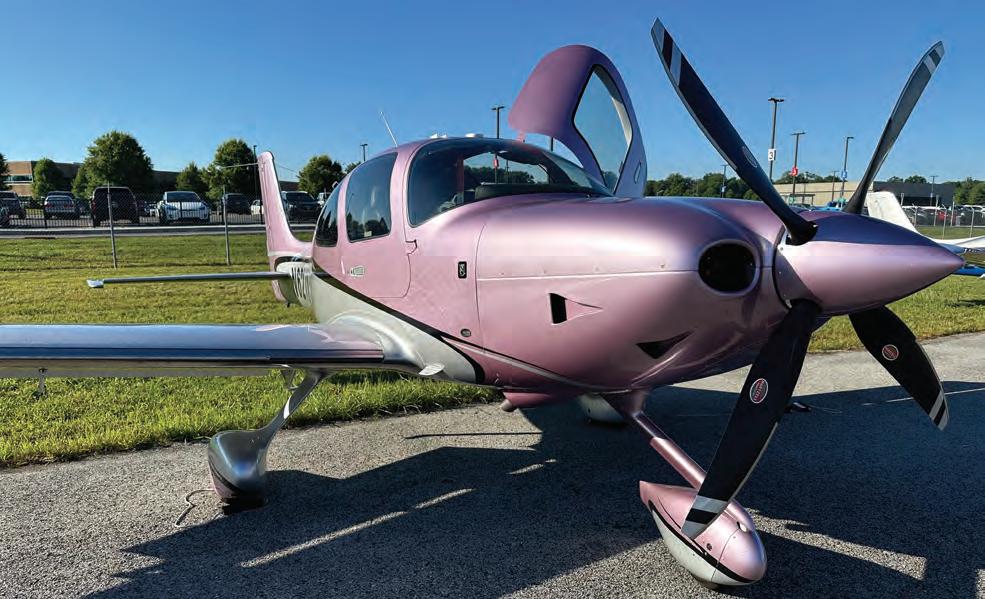
Making a move to a Vision Jet type rating is easier if pilots start with the piston-powered SR22T G7.
amps. The EarthX battery’s management system sends information to the avionics, such as state of charge, capacity, temperature of the battery, and fault conditions. Battery life of the lithium-ion unit is six years, twice that of the lead-acid battery it replaces.
The turbocharged SR22T, the top-of-the-line piston-engine Cirrus, has an optional fourblade composite propeller and flight-intoknown-icing (FIKI), which is a TKS weeping wing system. Eight gallons is the FIKI capacity, and operating time depends on the level used—either high, low, or maximum. At low feed, the endurance is about two and a half hours. Most buyers of the SR22T opt for the FIKI package, according to McIver.
An intercooled, 315-hp Continental TSIO550K engine powers the SR22T, enabling cruise at up to the maximum operating altitude of FL250 and a maximum cruise speed of 213 knots. At 55% power, maximum range is 1,021 nm. Useful load is 1,246 pounds, and there are seats for up to five occupants.
I’ve flown the latest version of the Vision Jet and so was somewhat familiar with the GTCs in the SR22T. It was clear that the new design was a solid stepping-stone into the jet. I would confirm this later with a session in the Vision Jet simulator.
The airplane sported the Borealis paint scheme: a dusky pink hue with black and gray accents.
With 48 gallons of fuel and 5.3 gallons of TKS fluid, the SR22T weighed 3,155 pounds, leaving plenty of room to carry more fuel (maximum is 92 gallons) up to the 3,600 mtow. It was a perfect clear Tennessee day with hardly any wind and 70 degrees F on the ground.
The new avionics layout with the two GTCs and repositioned controls looks even cleaner and less cluttered than previous versions. Gone is the bulky keyboard controller and audio panel, leaving the center console much slimmer and smaller. Removal of the backup display from the bolster allowed Cirrus to make it more elegant-looking.

The PFD and MFD retain their buttons so a lot of avionics control can be done without using the GTCs. McIver plugged in a flight plan from Knoxville’s McGhee Tyson Airport (KTYS) to nearby Rockwood Municipal (KRKW).
Experienced Cirrus pilots are familiar with the lack of nosewheel steering and the need to use brakes to turn on the ground. The high-performance, lightweight Beringer brakes are firm and allow for accurate steering, and they prevent brake fade after landing.

I taxied to Runway 05R at KTYS and, once lined up, advanced the throttle all the way. Automatic wastegate controllers kept power in the turbocharged engine at the right setting, 100% on the power gauge, which is simpler to look at compared to the manifold pressure and rpm gauges. There was no need to worry about a prop control because that is integrated with the throttle in Cirruses.
After a smooth liftoff, the SR22T accelerated to its climb speed of 120 knots until I leveled off at 3,000 feet. I spent a few minutes getting used to the feel of the controls and then headed northwest to intercept the final approach course for the KRKW RNAV (GPS) RWY 22 approach. We had selected the approach chart in a window in the PFD and could see our own ship position displayed on the chart.
Joining the final approach course at the USICU waypoint with the autopilot engaged, I pressed the approach button on the autopilot control panel and the Cirrus turned left and intercepted the course, then began descending on the LPV glide path at the final approach fix.
After reaching the LPV minimums at 1,912 feet, I disconnected the autopilot, pushed the go-around button, and advanced the throttle, and we climbed back to altitude for the short return leg to KTYS.
The intent of this flight wasn’t to evaluate the SR22T G7’s performance and handling, but compared to earlier Cirruses that I have flown, the G7 shows that the design has come a long way.
Very early Cirruses were more reminiscent of typical general aviation airplanes, and over the years more comfort and luxury features have been progressively added. It’s no surprise that buyers are willing to pay substantially more than $1 million for the latest version with all the trimmings.
That said, the G7 does handle better than older models because Cirrus engineers have tweaked the flight control system and airframe design over the years to make handling more pleasant. I’m not a huge fan of the side yoke, but it does have the advantage of leaving the area in front of the instrument panel clear. In reality, flying the piston SR Cirruses feels natural after a little exposure.
Cirrus now has two CAE Vision Jet fullflight simulators in Knoxville to handle the growing number of type ratings needed by new jet pilots. To prepare for the type rating course, pilots need to be proficient, not just current, with IFR flying. The Cirrus instructor will evaluate the candidate with a flight skills assessment that includes an IFR
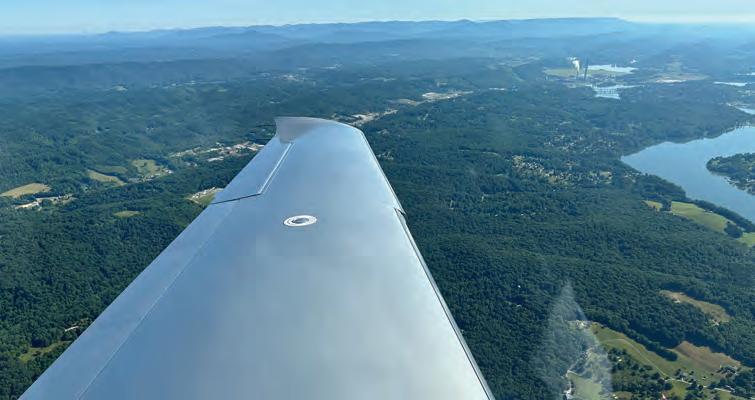
approach and partial panel flying along with some bookwork on arrival and departure procedures, which jet pilots are more likely to use, and IFR procedures in general.
Assessment is done two months before the type rating course so the student has time to resolve any deficiencies. “This gives us a starting point and suggests how to best prepare them for training,” said Justin Bender, a Vision Jet instructor and training center evaluator who conducts type rating checkrides. “We suggest what they should work on to make their training more successful.”
Tools available to the student include a Garmin G3000 hot bench where they can practice using the avionics and flight training devices that mimic the Vision Jet but without motion bases. The ground school takes five days and is followed by five simulator sessions that include scenarios such as flying into Aspen in cold weather and a Memphis to Atlanta trip.
Bender demonstrated the new smoke-inthe-cockpit feature in the latest CAE 7000XR simulator, which was delivered in November 2023. The smoke adds another layer of realism to the simulator and is a much better way to practice emergency situations. Also on that list is the emergency autoland system, which with the press of a button automatically locates a suitable airport, positions the jet for landing, lowers the flaps and landing gear, then touches down and stops on the runway. After an autoland demo we did a CAPS pull, which is probably more realistic in a full-motion simulator than in an SR training device.
After taking off from Long Beach, California, and climbing to 8,000 feet, I leveled off and reached to the overhead panel, moved the CAPS handle into the vertical orientation, and then gave it a strong pull. The system automatically reduced power and slowed the jet down before deploying the parachute. Once fully deployed, the jet sat in a level attitude and descended at about 1,800 fpm. The descent seemed to take a long time and felt fairly benign, although I’m
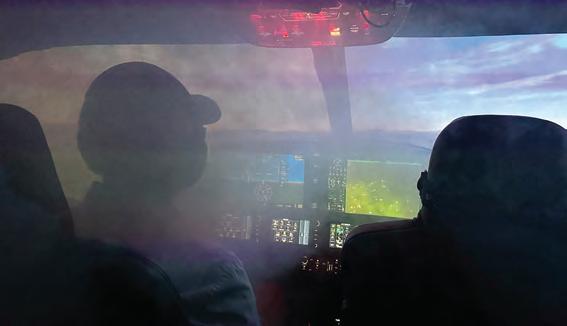
sure it’s more dramatic in the real airplane.
More than 500 Vision Jets have been delivered, and the type rating count is already above 1,200. Of new Vision Jet buyers, 69% are transitioning from a piston-engine Cirrus SR, so the move to make the G7 more compatible with the jet makes sense.
About 30% of Cirrus SR buyers are new to aviation, and Cirrus is serving them with its new private pilot course. “It’s been super
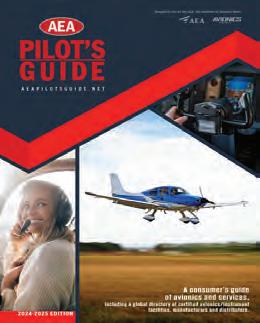
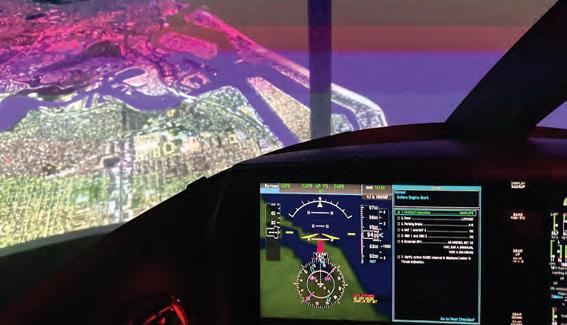
well-received,” McIver said, “and a lot more seamless for someone who wants to experience a Cirrus. This was the last piece of the puzzle for the Cirrus ecosystem.”
Having flown the SR22T and then jumped right into the Vision Jet simulator, I agree with McIver that it’s a more seamless experience. The avionics interface is almost exactly the same, and this will save pilots a lot of time during Vision Jet type
rating training. Placement of controls and ergonomics are markedly similar and, in my opinion, a G7 pilot is going to feel right at home in the Vision Jet cockpit.
I’ve long believed that the Vision Jet is easier to fly than the SR. With one engine control, once the pilot gets used to jet speeds, runway handling and performance, and high-altitude pressurized flight, he or she will quickly feel comfortable and safe. z
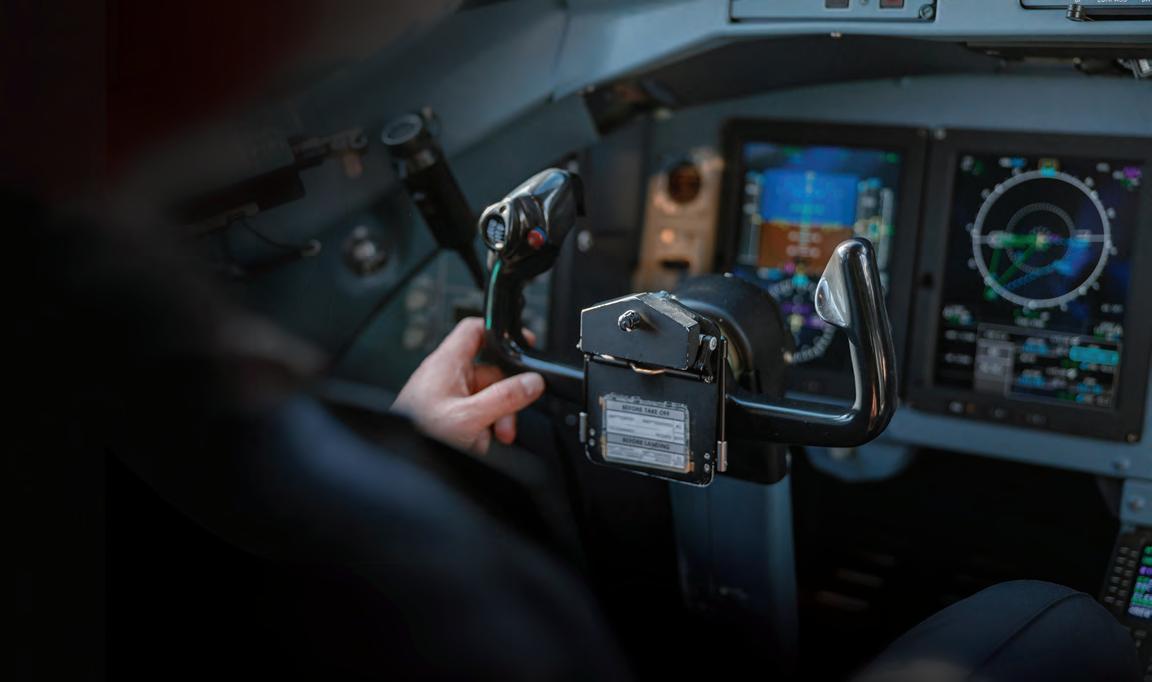
BY MATT THURBER AND CHARLOTTE BAILEY

Robinson president and CEO David Smith unveiled the 10-place R88 during Verticon as the company prepares to step into a new size realm.
Vertical Aviation International’s 2025 edition of the newly named Verticon served as a launch platform for new and updated helicopters, among other significant news. Key among those announcements were the unveilings of the Robinson 88 and the Airbus H140.
In a departure from its light-helicopter roots, Robinson Helicopter has introduced the next helicopter in its product line: the 10-place single-engine turbine R88, a clean-sheet design with a new type certificate. First flight could come as early as this
year, with certification and service entry to follow later this decade. The company is already booking orders for the $3.3 million R88.
With a 275-cu-ft cabin capable of carrying up to eight passengers or 1,800 pounds of payload with full fuel, R88 missions will include aerial firefighting, air medical transport, utility work, and passenger transport. The cabin will be reconfigurable for various mission types.
Until the R88 enters service, the Torrance, California company’s largest helicopter is the five-seat R66, powered by a 300-shp Rolls-Royce turboshaft. The R88’s
engine is a Safran Helicopter Engines Arriel 2W capable of producing 1,000 shp.
“We like to surprise the market,” Robinson Helicopter president and CEO David Smith told AIN. “It’s quite a large aircraft and is everything that Part 27 can offer in a single-engine package, with cabin capacity and performance consistent with many twins.
“This opens a lot of doors, and it’s more than the next class above the R66. I feel like we hit a sweet spot, [in terms of] economics, it’ll run at an affordable rate and can be acquired at an affordable rate and missionized at an affordable rate. It’s
larger than a seven-seat aircraft and in the same range of cabin and payload as you get with twins.”
Robinson engineers have been heavily working on the R88 for the past two years, and developing the helicopter was one of the objectives for Smith when he took over leadership of the company from Kurt Robinson in February 2024. “We talked to a lot of customers,” he said, “and asked what they needed. It’s been a big part of our engineering focus.”
The R88 carries on Robinson’s two-blade teetering main rotor system with bonded metal blades but with a slightly higher disc loading, Smith said. “This is a fresh look at our two-blade architecture.”
Its blades maximize the benefits of new components, tip shapes, and noise treatment to deliver additional performance and a lower noise footprint. The tail rotor will continue company founder Frank Robinson’s specialty of high margins in all sorts of wind conditions.
One Robinson characteristic common to the R22, R44, and R66—the teeter bar single-post cyclic control— will not appear on the R88. The R88’s cyclics will be traditional dual controls, mounted like most helicopters on the floor in front of each pilot. A benefit of this design is that each front seat’s controls can be removed for passenger carriage.
The R88 shares the structural architecture of its siblings, with a welded steel frame, aluminum skin, and few titanium parts. However, the R88 will employ more use of carbon-fiber composites. Flight controls will feature dual hydraulics for pitch and roll control.
Eighty percent of buyers select stronger windshields on the R66, so impactresistant windshields certified to Part 29 transport helicopter requirements will be standard on the R88.
While the Safran Arriel engine for the R88 will require certification, this is an
update to an existing model, mostly involving Fadec software. Power will be derated to leave some margin, he said, “so we aren’t living at the redline.”
At the aft end of the R88 fuselage, a folddown rear entry door will make it easier to load medevac patients on stretchers. Rear doors will be sliding units. IFR capability will be an available option, according to Smith. Cruise speed isn’t yet revealed but will be “plenty fast for this market,” he said.
This opens a lot of doors, and it’s more than the next class above the R66. I feel like we hit a sweet spot, [in terms of] economics, it’ll run at an a ordable rate and can be acquired at an a ordable rate and missionized at an a ordable rate.
— David Smith Robinson Helicopter president and CEO
More important is how quickly pilots can start and shut down the R88. “We want systems to be smart, simple, lean, and quick to boot up and get in the air, and the same thing for shutdown and exit,” Smith noted.
As for maximum weight, he said, “We’re not talking about gross weights directly right now, but the big picture of this aircraft is you’ll have the option for a 3,000-pound external load hook, and that’ll be a human external cargo-rated hook. It’s going to be a massive aircraft that’s above an [Airbus] AStar and in the range of a [Bell] 429-, [Airbus] H135category performance.”
Range is projected at more than 350 nm,
and endurance will be more than 3.5 hours. Other options include a utility basket, wire-strike protection kit, and pop-out floats. Buyers can opt for high skids for increased ground clearance and firefighting water tank compatibility.
The first R88 flight test article is under construction. “We are working hard to fly as soon as possible,” Smith said. “If it flies this year, that will be a real success for the team. But I think the more reasonable approach is maybe a little bit beyond that.”
Some pacing items include the first time Robinson is working with Safran on an engine and the fully integrated Garmin avionics suite.
“[The Safran’s] a unique variant for us, but it is a very stable core engine to work from,” he said. A service program from Safran is included with each R88.
The Garmin suite features touchscreen G500H TXi displays that include a crew alerting system, GTN navcoms, and a standard fouraxis Garmin autopilot. A health usage monitoring system and data recording with datalink are also standard.
“Certification for us is a relatively fast process,” he said. After the first flight, certification takes 2.5 to four years for a typical Robinson program. “The R66 was a fairly quick turnaround, roughly three years to get to certification from the initial flight. In this design, we intentionally chose design features that kept the risk level low from a certification standpoint.”
Smith anticipates that the R88 will bring new customers to the Robinson family and that some may elect to buy an R44 or R66 while waiting for the R88.
Airbus Helicopters has launched the H140 helicopter to bridge what it sees as a gap in its H135 and H145 light-twin family. Unveiling the new addition to its rotorcraft lineup, the European manufacturer
said the H140 will deliver more efficient mission flexibility when it enters service in 2028.
Aeromedical operators Global Medical Response (GMR), ADAC Luftrettung, and ÖAMTC Flugrettung are the launch customers for the new helicopter. During separate signing ceremonies during Verticon, GMR secured an agreement for 15 H140s, while ADAC and ÖAMTC inked a joint agreement with Airbus for 10 H140s, three H135s, and one H145.
The H140 will be certified under EASA CS-27/FAA FAR 27 requirements, being at the top end of the “small rotorcraft” designation with a mtow of 6,985 pounds, which is 429 pounds more than the H125. Airbus said this will translate into elevated useful load and performance specifications that, although largely undisclosed for now, will include a maximum speed of 155 knots.
A key factor behind the improved performance is the new Safran Arrius 2ES engine that will deliver around 7% more power for the same fuel burn at maximum continuous power than the current Arrius 2B2 Plus turboshaft. In the cockpit, the H140 will feature the same Helionix avionics suite as its siblings.
At a pre-show media briefing in Germany, Dirk Petry, Airbus v-p and head of the H135 program, said customer input, especially from Europe’s emergency medical support (EMS) sector, has been influential in defining the helicopter. With Airbus Helicopters recently celebrating a record 2024 in terms of sales and profitability, including 445 gross orders last year, he said the time is right for the company to try to offer more value in the light-twin market segment.
“This is our new product in the range of light-twin helicopters, defined by a large cabin and the incorporation of the optimum innovations, performance and economics in terms of an attractive acquisition price, but also in low operating
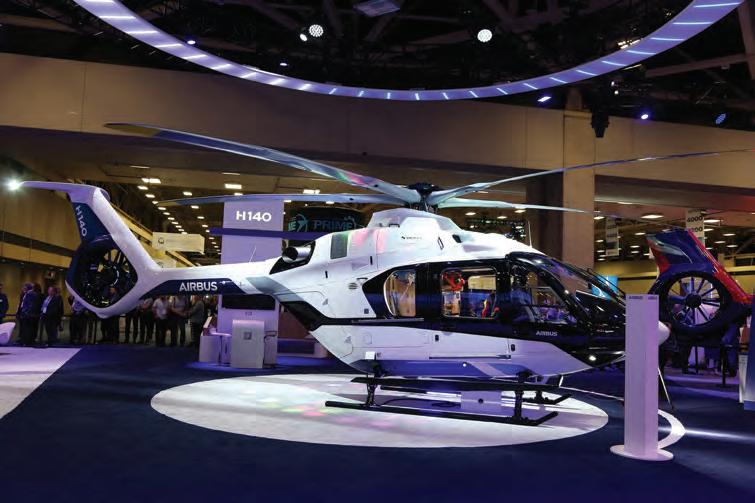
costs,” Petry stated. Airbus said the H140 will deliver an enlarged cabin while offering comparable direct maintenance costs to the H135 and the larger H145.
Incorporating things learned from Airbus’ 2012 Bluecopter project, evolved T-tail elements—albeit in a different configuration, with the horizontal stabilizer mounted at the top of the tail—are expected to give the H140 increased lift in hover. The five-blade, 35-foot, 5-inch diameter rotor is similar to the H145’s while incorporating weight-saving benefits. Increased use of composites includes a larger-diameter Fenestron.
Externally, the aerodynamicallyoptimized front section of the airframe, complete with bird strike-resistant windshield, also features rear clamshell doors that are almost 10 inches higher than the H135’s. These, combined with a raised tail boom, facilitate easier rear stretcher loading—an operational consideration also evident in the wider side cabin doors.
Inside, a cabin volume of just more than 215 cu ft, excluding for the pilot, offers a 20% increase in available space,
unobstructed by center or door posts. Combined with a 4-foot, 2-inch flat ceiling and 15 inches more width than the H135.
Following EASA certification and service entry in 2028, FAA validation, along with commercial air transport use-case approvals, are expected to follow in 2029.
With the prototype H140 (registered as D-HEEY) having made its first flight in June 2023, around 55 hours have been conducted so far across two phases. Volker Bau, chief test pilot for Airbus Helicopters Germany, said that with harmonized controls, H135 pilots “will feel familiar and at home.”
Already flying three times a week, D-HEEY has almost completed the entire envelope expansion phase, with a hot-andhigh campaign to commence this summer followed by cold-weather analysis. A second prototype aircraft will follow this year and two more in 2026.
At its helicopter final assembly line in Donauwörth, Airbus Helicopters is planning to expand output rates above the current total of 150 aircraft to work the H140 into the mix alongside the H135s and H145s. z

Textron Aviation is about to start construction for an expanded and modernized service center at Melbourne Essendon Fields Airport (YMEN) in Australia. The U.S. aircraft manufacturer said the enlarged facility is expected to open in early 2026 to provide increased support capacity for operators of Cessna, Beechcraft, and Hawker turboprops and jets.
The company operates a global network with nearly 3,000 staff and 50 mobile service units, consisting of “Go Teams” that can be sent to support aircraft operators locally. In addition to Melbourne, Textron Aviation also has Asia-Pacific service centers at Gold Coast Airport (YBCG) in Queensland, Perth’s Jandakot Airport (YPJT), and Singapore Seletar Airport (WSSL).
Duncan Aviation has introduced online aircraft parts exchange capabilities on its DuncanAviationParts e-commerce platform, enabling industry professionals to complete full exchange transactions through the website. The enhancement comes amid growing traffic and sales on the platform, which serves as a comprehensive resource for aviation parts procurement. Via the website, Duncan provides access to more than 723,000 inventory items, featuring high-resolution photos of popular parts, real-time stock availability, in-house repair service information, and instant quote requests. Registered users receive immediate access to pricing, quantities, and essential documentation such as traceability papers and 8130 dual-release tags. Domestic customers can purchase parts outright using credit cards or net terms. The company plans to further develop the platform with additional features including international sales capabilities and expanded inventory partnerships.
Satys has opened a new aircraft painting hangar at Dubai’s Al Maktoum International Airport (OMDW). The announcement follows the signing of a memorandum of understanding in December between the French company and business aviation services group ExecuJet MRO Services.
According to Satys, it aims to offer an alternative to sending aircraft overseas for painting services, reducing costs and turnaround times for regional operators. The Middle East is seeing growth in the number of locally-based business aircraft.
The hangar spans 25,830 sq ft and is set to begin operations in the second quarter of 2025. With a workforce of 30 skilled employees, the facility is equipped to handle aircraft painting for business jets and commercial models, including the Airbus A321 and Boeing 737.
São Paulo-based business aircraft services provider Lider Aviation is relocating to other airports in the São Paulo area as its Congonhas Airport (SBSP) operations shrink due to airport manager Aena's focus on airline growth. Lider will move from its long-time hangar to a new but smaller building and hangar on the far side of the runway.
Aircraft charter, management, and FBO services will continue at Congonhas, as well as Guarulhos and Viracopos airports. However, airplane MROs, including Gulfstreamand HondaJet-authorized service providers, have moved to Lider’s 43,000-sq-ft hangar at Sorocaba Airport, increasing maintenance capacity by 66% and freeing ferry and test flights from slot restrictions it dealt with at SBSP. Rotary-wing operations, hangarage, and MRO will move to a new base— Lider’s 22nd—at São Paulo Campo de Marte Airport. Its Bell and Leonardo MRO will move to Helicidade in a partnership that will “simplify logistics for Bell and Leonardo owners who operate” at the heliport, according to the company.

BY DAVID JACK KENNY
Gates Learjet 35A, Feb. 10, 2025, Scottsdale, Arizona
An apparent collapse of the left main landing gear led the jet to depart the left side of the runway just after touchdown, sliding across the intervening safety area and a taxiway before striking the windsock and colliding with a parked Gulfstream 200. The Learjet pilot was killed; the first officer, one of the two passengers, and a person inside the Gulfstream suffered serious injuries, and the second passenger incurred minor injuries. Operated under Part 91 by Chromed in Hollywood, the Learjet was substantially damaged.
Security camera footage and images from several personal cell phones showed that the left main gear was not down and locked during the approach, but trailing well aft of its normal position.
N81VN was en route to Scottsdale from Florida, with a refueling stop in Austin, Texas. At 2,800 feet agl, the jet turned onto the final approach path to Runway 21. Security footage and witness videos showed the left landing gear trailing aft from its normal position. Upon touchdown, the aircraft veered left, exited the runway, and struck the G200. The Learjet engines continued to run until emergency responders arrived and shut them down.
Investigators found the left main landing gear on Taxiway Bravo, with the aft trunnion pin missing from its casting. Investigators noted excessive grease in the wheel well. In June 2024, the report indicated that the same flight crew had a previous hard landing incident, requiring a hard landing
inspection. Another mechanic who serviced the landing gear in December noted excessive grease usage.
In an interview with the NTSB, the technician who performed the hard landing inspection said he removed both main landing gear to facilitate the pertinent eddy-current inspections that were required. He told the NTSB that he followed the maintenance manual for all of the work he performed.
According to the NTSB report, the procedure to reinstall the gear must be followed explicitly. “If the [retaining] bolt is secured before engaging the pin in the trunnion casing then the grease hole could be aft of the bushing, allowing grease to escape outside the pin, into the wing bay behind spar #7,” the NTSB said. “With the adjacent access panel removed, using a mirror, the pin can visibly be seen not making contact with the aft trunnion fitting when it is not fully pushed into the trunnion casing.”
Notably, the NTSB is aware of at least three other previous events where a Learjet landing gear had disconnected from the airframe because the retaining bolt was not engaged through the aft trunnion pin.
The accident occurred under clear weather conditions, with visibility of 10 miles reported. Within minutes, the Scottsdale Fire Department arrived on the scene, and the first officer was extracted from the cockpit and transported to the hospital.
Cessna 525 Citation CJ1, Jan. 9, 2025, Ubatuba, Brazil
The private jet, registered in Brazil as PR-GFS, was landing at Ubatuba’s Gastão Madeira State Aerodrome (SDUB) and
overran Runway 9’s boundary, colliding with a fence, bursting into flames, and coming to a final stop on a beach as shown in videos posted to social media by bystanders. The pilot in command died in the accident. Three of the four passengers on board suffered serious injuries and one su ff ered minor injuries; one person on the ground received serious injuries and another suffered minor injuries, according to a preliminary report by Brazil’s Aeronautical Accidents Investigation and Prevention Center (CENIPA) published on January 15.
“The aircraft took off from Mineiros Aerodrome (SWME), Mineiros, GO [Goiás], bound for Gastão Madeira State Aerodrome (SDUB), Ubatuba, SP [São Paulo], at approximately 11:20 a.m. (UTC) in order to carry out a private flight, with one crew member and four passengers on board,” the report states. “During landing, the aircraft exceeded the longitudinal limit of the runway and collided with the fence that limited the airport site, coming to a final stop outside the aerodrome area.”
Textron Aviation gave a takeoff distance for the CJ1+ at 3,260 feet and landing distance of 2,590 feet in its 2005 announcement on receiving FAA type certification for the aircraft. The runway at SDUB is 3,084 feet long (940 meters), according to AIP data. On the date of the accident, the first 1,247 feet (380 meters) of Runway 9 was closed, leaving only about 1,837 feet of non-displaced runway available for landing.
Textron Aviation’s landing distance number appears to include a pilot and three passengers; it would also imply standard temperature and pressure and dry surface conditions. Videos of the accident indicate Ubataba’s runway was wet when PR-GFS made its landing. The investigation by CENIPA is ongoing.
Airbus Helicopters AS350B3, Nov. 16, 2020, Sognesand, Rogaland County, Norway
Control inputs intended to counter unexpected vertical oscillations inadvertently amplified them instead, leading to the helicopter’s collision with trees during the delivery of a load of concrete to the site of a powerline pylon. The solo pilot escaped without injury. The Norwegian Safety Investigation Authority concluded that “rotorcraft-pilot coupling”—a term that includes both pilot-assisted and pilotinduced oscillations—was triggered by compensation for a sudden change in altitude caused by a gust of wind, contact between the bucket and the pylon foundation, or both. The helicopter’s light fuel load relative to the weight of the concrete, the pilot’s use of minimal control friction, and the design of the servos in the 2002-model aircraft all likely contributed to the oscillations.
The accident occurred on the 14th of a series of short flights between a loading zone and the construction site, hauling concrete in a manually operated bucket suspended on a 15-meter (49-foot) steel cable. The pilot approached from the west and established a hover over the pylon form in variable winds, likely including a light quartering right tailwind. Strong vertical oscillations developed shortly after workmen opened the bucket’s hatch, and the pilot immediately released the cable; he did not feel any contact between the bucket and the concrete form, but the workers reported that it was in contact with the form and was in fact left standing on it afterwards. The pilot lowered the nose to fly away from the people on the ground and raised collective, but “the helicopter did not respond as expected.” The main rotor rpm appeared to decrease throughout its descent into the trees.
Beginning with the 2006 model year, AS350 helicopters were delivered with a new design of main servos that reduced sensitivity to rotorcraft-pilot coupling. Service bulletins published in 2010 and 2018 recommended retrofitting the new-model servos and banjo screws with flow restrictors, respectively, but these modifications were optional and had not been made to the accident helicopter.
Daher TBM 700, April 7, 2023, Ashland, Oregon
Failure to maintain at least the required 80 knots airspeed on final approach left the airplane with insufficient rudder authority to counter left yaw resulting from increased torque during an attempted go-around, leading it to touch down left of centerline and then depart the runway. The pilot and the instructor conducting his flight review were able to secure the aircraft and exit through the passenger door after it “traveled through bushes and scrub trees…coming to rest at the edge of a creek” with the pilot’s door obstructed by branches. However, “a small fire engulfed much of the airplane.”
The flight review began with an IFR round trip between the Medford and Klamath Regional airports. On the return to Medford, the instructor requested a diversion to Ashland, where the pilot successfully dealt with a simulated gear malfunction and flew a stabilized approach to Runway 30. As they crossed the threshold, the instructor called for a go-around. The pilot increased torque to 70% and leveled the airplane, but its airspeed did not increase and right rudder did not correct an immediate left yaw. Impact occurred 3 to 5 seconds after the power increase.
Neither the pilot nor the instructor recalled feeling “any indication of impending loss of control” or hearing a stall warning, but the audio track of the airplane’s L3 lightweight data recorder captured three audible callouts of “Stall, stall” after it descended below 500 feet. Stall warnings
were also recorded before the successful landing at Klamath Regional. The airspeed on both approaches dropped below 70 knots. The instructor’s estimated 9,347 hours of experience included 5.3 in type.
Bell 205A-1, July 19, 2023, Haig Lake, Alberta, Canada
The pilot’s attempt to touch down in a patch of muskeg after a complete engine failure was thwarted when the firefighting helicopter’s dip bucket caught on trees. Though the pilot immediately released the line, the snag caused the helicopter to pitch downwards and strike the ground in a nose-low, left-banked attitude. The pilot extricated himself from the wreckage but later died of his injuries.
Shortly after takeoff from the Haig Lake firebase with a dip bucket on a 150-foot longline, the pilot levelled off at 1,400 feet and contacted dispatch for more information about the fire. The helicopter descended 300 feet while the pilot read back the dispatcher’s transmission; he then radioed that he was returning to base “due to an unspecified issue.”
The helicopter continued to descend during a 180-degree right turn, then lost all engine power. The pilot entered an autorotation but did not immediately release the bucket.
The power loss was traced to a complete failure of the brazed joint between the air diffuser casing assembly and the No. 2 bearing support cone. Neither component showed evidence of previous disassembly or repair, and the failure was attributed to an undetermined manufacturing defect. The engine’s time in service was not reported.
Amy Wilder contributed to this report alerts
BY GORDON GILBERT
April 25, 2025
Air carrier airports certified under FAR Part 139 are required to submit an implementation plan for a safety management system on the following deadlines: April 24, 2024, for airports designated as hubs; Oct. 24, 2024, for airports with 100,000 or more annual operations over the previous three years; and April 25, 2025, for airports classified as port of entry, landing rights, user fee, and international facilities.
April 1, 2025
Air passenger duty (APD) taxes of between $105 and $875 per passenger, depending on the length of the flight, are part of the UK’s latest proposed federal budget plan. The new rates, planned to start on April 1, 2025, apply only to corporate jets having a mtow of more than 44,000 pounds with 18 or fewer passenger seats. However, in late 2024, the UK issued a proposal for comments that would make the APD applicable to all business jets.
April 2, 2025
The FAA will require individuals with foreign addresses and no U.S. physical address on file with the agency who hold or apply for certain certificates, ratings, or authorizations to designate a U.S. agent for service of related documents. The U.S. agent will receive FAA document service on the certificate holder or applicant’s behalf. According to the agency, “This rule facilitates the FAA’s ability to accomplish prompt and cost-effective process and service of other safety-critical or time-sensitive documents to individuals abroad through their U.S. agents.” The compliance date is April 2, 2025, for applicants and July 7, 2025, for certificate holders.
April 10, 2025
Brazil plans to reinstate visa requirements for Australian, Canadian, and U.S. citizens
(including flight crews) starting April 10, 2025. According to business aircraft flight planning service Universal Weather and Aviation, travelers should apply online at least 15 days before their intended arrival to account for the five-day processing period.
April 30, 2025
Airplane operators and state verification authorities must submit their 2024 CORSIA emissions data to ICAO no later than April 30, 2025. Some states recommend that the verified emissions reports be submitted as an Excel file to ensure that all information is readable and will facilitate consolidation of the data. State names used in the reports should be those recognized by ICAO. Operators whose emissions were below the CORSIA threshold should let their state authorities know that a report is not required and, therefore, will not be submitted.
May 1, 2025
The European Commission has published a set of standardized rules of the air (SERA) to harmonize European requirements with International Civil Aviation Organization (ICAO) regulations and recommendations with the aim to enable a “high uniform level of aviation safety in Europe and globally.” Specifically, the new and revised rules “clarify, improve,
and facilitate the implementation of SERA requirements, and bring operational and safety benefits also in the domains of air traffic management, air navigation services, and airport operations.” Compliance deadline is May 1, 2025.
May 1, 2025
The Centers for Disease Control (CDC) has extended existing air waybill waivers to May 1, 2025, pertaining to dogs entering and/or reentering the U.S. This extension only waives the CDC pre-arrival air waybill requirement. All other responsibilities outlined in the Aug. 1, 2024 final rule remain in effect, including: Ensuring dogs have proper documentation, making staff available in the arrival area until dogs are cleared and collected, and facilitating the prompt return of dogs denied entry within 72 hours. These regulations apply to all air carriers, charter operators, and private aircraft.
May 1, 2025
ETIAS (European Travel Information and Authorization System) is an online pretravel and pre-boarding requirement applying to visa-exempt third-country nationals planning to travel to European states. The implementation date for ETIAS has been extended several times, with the latest now May 1, 2025. The information is submitted via an online application ahead of arrival at
borders enabling pre-travel assessment for irregular migration risks, security, or public health risk checks. ETIAS is one of two new European travel authorization programs. The other program is EES (Entry/ Exit System), compliance for which was scheduled to start in October 2024. International flight planning organizations, such as Ops Group and Universal Weather and Aviation, have been seeking clarification if ETIAS and EES apply to private operators or just commercial flights.
May 7, 2025
U.S. federal agencies, including the Transportation Security Administration (TSA), will begin so-called Real driver's license and identification enforcement. Starting on May 7, 2025, only state-issued driver’s licenses and identification cards that meet the security requirements established by the Real ID Act will be allowed for official purposes, including boarding commercial aircraft. The TSA said the rule “provides necessary flexibility for federal agencies to begin enforcement in a manner that takes into account security, operational risk, and public impact.” The rule also requires agencies to coordinate their plans with the Department of Homeland Security, make the plans publicly available, and achieve full enforcement by May 5, 2027. However, enforcement deadlines have been delayed numerous times since the Real ID Act was signed into law in 2005.
Starting June 12, 2025, all aircraft operating in Class A and in designated Class C airspace over the Republic of South Africa will require ADS-B Out. The mandated schedule follows consultations with government officials, private and commercial operator representatives, and other stakeholders.
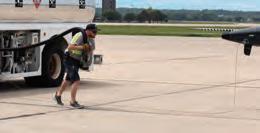



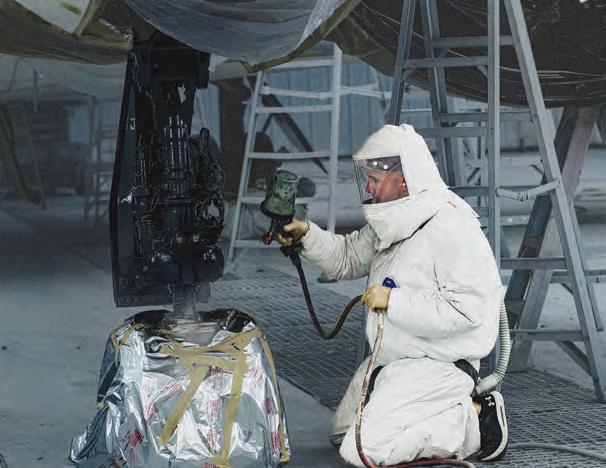



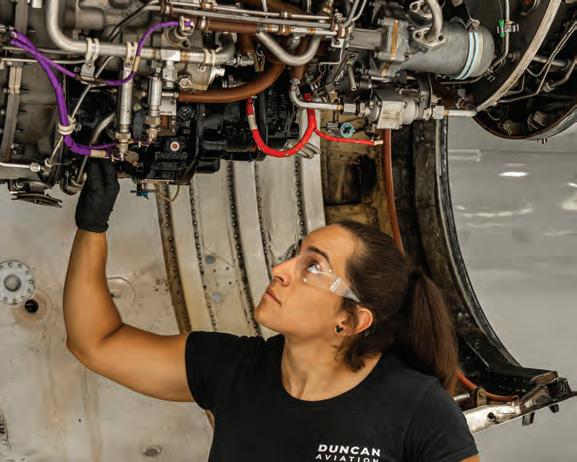
BY JESSICA REED
Robert Seidel is stepping down as CEO of Alerion Aviation after 12 years of service and transitioning into the role of chairman. Seidel previously worked for Gulfstream Aerospace and Jet Aviation. Daniel Ramirez will take on the position of CEO. Ramirez was recently COO of Vista Americas and has also served as director of safety at XOJet and as Embraer Executive Jets’ manager of flight safety programs for North America.

ACI Aviation Consulting named Wes Romaine president and Andy Krantz vice president. Romaine has worked for ACI since December 2007, leading business development and guiding marketing strategies, client acquisition, and industry outreach. Krantz joined the company in 2018 as director of valuations and has conducted thousands of valuations during his more than 10-year career.

Gulfstream Aerospace named Kirsten Menza group v-p of sales for the Americas (U.S., Canada, Latin America, and the Caribbean) and promoted Kevin Brink to division v-p of sales for the Western U.S., Western Canada, and Latin America, Menza’s former role. Menza’s 25-plus years of experience in business aviation includes working for Gulfstream since 2017. Brink has been with the company since 2013, when he joined as regional v-p of sales for the Northwestern U.S. and Western Canada.
Megacorp Aviation appointed Rory McQueen CFO. McQueen’s experience in aviation finance spans more than three decades, including leadership roles at VistaJet, Bombardier, and Chorus Aviation Capital.
Airshare hired David Makowski as senior v-p of maintenance and Nick Kaufman as v-p of sales for the West Coast. Makowski, Elliott Aviation’s former COO, has also held positions at Delta Air Lines, NetJets, and Wheels Up. Kaufman, who recently served as v-p of aircraft acquisitions at Ventura Air Services, brings prior experience working for companies including Wheels Up and Flight Options/Flexjet.
Four team members at Duncan Aviation have taken on new management roles. Mark Winter, who joined the company as manager of the satellite shop in Houston in 2010, is now avionics regional sales manager. Chad Sweppenhiser, who worked on F-18s in the U.S. Marine Corps and joined Duncan 13 years ago as an avionics technician, has taken over as the new manager at the company’s Houston satellite shop. Logan McCabe is now manager of the Duncan Aviation satellite in Manassas, Virginia. He previously worked at the company’s satellites in Fort Lauderdale, Florida, and Austin, Texas. Joe Vittling, who has worked for Duncan for more than seven years, now manages the shop at Nashville International Airport. Duncan Aviation also promoted Shane Mack to turbine engine technical representative for Honeywell and GE aircraft engines. Mack joined the company in 2005, worked on Falcon and Hawker airframes for five years, and then transitioned to Duncan’s engine line shop.
Elliott Aviation promoted Bill Forbes to senior v-p of avionics. Forbes has been a part of the company’s avionics team for seven years and previously held leadership positions at Executive Aircraft Maintenance and Cutter Aviation.


Cameron Gowans joined P artners In Aviation (PIA) as v-p of operations. Most recently, Gowans worked at Four Corners Aviation as president, COO, and CCO. He also previously was chief strategy officer at Aquila Aviation Holdings, president of Jet Linx Chicago, and v-p of sales at Embraer Executive Jets, among other roles.
Henry Julicher was named senior manager of cargo operations and business development for Avflight. Julicher’s 15-plus years of prior experience include working for Cargobase USA and Lufthansa Cargo.
Cutter Aviation has expanded Monica Kenney’s role as Pilatus Aircraft business manager. She will now oversee Pilatus customers’ entire experience from initial sale through long-term ownership
and support. Kenney joined the company in 2018, working in customer relations, aircraft sales, and brand management.

VisionSafe appointed Jon-Michael Kasten as CEO. He brings more than two decades of leadership experience in aerospace at various companies, including Intec Aerospace, Crane Aerospace, AvtechTyee, and Pacific Propeller International.
Omni Helicopters International (OHI) Group announced that Roberto Coimbra is stepping down as CEO of Omni Táxi Aéreo, OHI’s Brazilian affiliate, and will become the board director.
Paulo Couto, formerly chief transformation officer for OHI Group, will take over as CEO of Omni Táxi Aéreo. Couto brings more than 25 years of experience in business transformation and strategic leadership in various industries.
Three C&L Aerospace employees were recently promoted. Brad Vieux was elevated to v-p of business development and continues to support the development of new distributorships and repair vendors, as well as C&L’s Citation Parts Program. Nick Phair was promoted to director of sales for corporate aircraft parts and will oversee support of large fleet operators, OEMs, and European operators. Kristina Snow was selected as director of business development and will work with all C&L sales teams on new customer development and product line market penetration.

Brent Misura was hired as v-p of design at aerial firefighting company Coulson Aviation. Misura’s 25 years of experience in aerospace include leading development and certification for the BAE-146/RJ85 large and Q400MRE medium airtanker programs.
Simply Jet promoted Francesco Barsotti to director of its Zurich, Switzerland branch, while Philipp Jarnoth became flight operations director. Barsotti previously held roles in flight instruction, operational control, and commercial aviation and was initially hired as a charter sales executive at Simply Jet’s office in Lausanne. Jarnoth has held leadership roles in operations and strategic planning and has served as a flight dispatcher and operations control center supervisor. He joined Simply Jet in 2020 as flight operations manager. z
The aviation community is grieving the loss of Casey Crafton of Guardian Jet and Vikesh Patel of GE Aerospace, who were among the 67 people killed when a PSA Bombardier CRJ-700, operating as American Airlines Flight 5342, collided with a U.S. Army Black Hawk helicopter near Ronald Reagan Washington National Airport on January 29. Crafton, who served as technical services manager at business aircraft broker Guardian Jet since 2019, was traveling on business when the accident occurred. An aviation professional with more than a decade of experience as an A&P mechanic, Crafton was known for his expertise in aircraft maintenance and his work overseeing pre-buy projects. The company remembered Crafton as not only a valued team member but “above all a husband, father, and a friend to all.” Guardian Jet has set up a GoFundMe for the Crafton family. Also aboard the flight was Patel, an MRO transformation leader at GE Aerospace remembered by colleagues as “a wonderful person, leader, and friend” whose “energy was contagious.” Patel, based in the Washington, D.C./ Baltimore area, had been with GE since 2013.
The professional aviation fraternity Alpha Eta Rho (AHP) has awarded its namesake honor to NBAA president and CEO Ed Bolen, recognizing his contributions to the industry. AHP presented the award during its Collegiate Aviation Symposium February 24 and 25. Bolen has led NBAA since 2004. His career includes eight years as president and CEO of the General Aviation Manufacturers Association and service as majority general counsel to a Senate committee. A private pilot, Bolen was instrumental in the passage of the General Aviation Revitalization Act of 1994. Ken Warriner, senior director of finance and administration for the Naples Airport Authority, was recognized by Airports Council International-North America with the 2024 Risk Management Professional of the Year award in the small and non-hub airport category. One of Warriner’s recent achievements has been securing a comprehensive flood insurance policy for the airport. Chris Holder, eastern U.S. technical sales manager at Concorde Battery, was inducted as a member of the 2025 South Carolina Aviation Hall of Fame class. Holder served in the U.S. Marine Corps, and earned his private pilot certificate in 1983.
Dassault saw billings similarly climb by about $400 million as it handed over five more business jets in 2024 for a total of 31.
Honda Aircraft deliveries, however, fell by half in 2024 to 11 with billings dropping from $153 million to $76 million. Eclipse did not deliver any models in the year, handing over two in 2023. However, Cirrus continues to hum along, handing over 101 of its single Vision Jets in 2024, up from 96 a year earlier.
Pilatus jet deliveries also remained strong with 51 PC-24s handed over in 2024, compared with 47 a year earlier. But its turboprop deliveries also helped dampen results for the sector, dipping from 102 in 2023 to 96 last year.
Daher reported an eight-unit increase to 82 deliveries, with most of that coming from its Kodiak utility line. Piper also saw its turboprop line improve by two deliveries to 62 in 2024. Epic further handed over nine more copies of its E1000 for a total of 26.
On the rotorcraft front, Airbus Helicopters handed over 22 more helicopters for a total of 349. These included nine more copies of its H175 super-medium and 18 more of its H145 light-twin models. These offset the 13-unit drop of H125 lightsingle deliveries.
Leonardo reported a nine-unit increase and the mix weighted more toward its larger aircraft with 67 of its medium-twin AW139s handed over, compared with 49 last year. Bell, awaiting certification for its 525, reported a one-unit improvement to 172 models.
However, Robinson Helicopter delivered one fewer for a total of 295, Sikorsky deliveries dropped by five to one on the year, and MD Helicopters delivered none, compared with nine a year earlier. z

JAMES HOLAHAN (1921-2015), FOUNDING EDITOR, WILSON S. LEACH, FOUNDER & CHAIR EMERITUS
EDITOR-IN-CHIEF – Matt Thurber
MANAGING EDITOR – Charles Alcock
DIGITAL EDITOR – Chad Trautvetter
EDITOR AIN MONTHLY MAGAZINE – Kerry Lynch
SENIOR EDITORS – Curt Epstein, Hanneke Weitering – Technology Editor
COPY EDITOR – Jessica Reed
NEWS REPORTERS – Sarah Rose, Amy Wilder
CONTRIBUTORS – Cathy Buyck – Europe, David Donald – U.K., Mark Huber, Jennifer Leach English, David Jack Kenny – Safety, Gordon Gilbert , Jennifer Meszaros – Southeast Asia, Dale Smith, Richard Pedicini, James Wynbrandt
PRODUCTION MANAGER – Martha Jercinovich
GRAPHIC DESIGNER – Grzegorz Rzekos
DIRECTOR OF VIDEO – Ian Whelan
SENIOR DEVELOPER – Cameron MacPherson
FRONT END DEVELOPER – David Lohmeyer
EXECUTIVE CHAIR – Dave Leach
PRESIDENT – Ruben Kempeneer
HEAD OF PEOPLE & BRAND – Jennifer Leach English
SENIOR DIRECTOR, INDUSTRY AFFAIRS AND EVENTS – Nancy O’Brien
ADVERTISING SALES
DIRECTOR OF SALES - Henry Specht
Victoria Tod – Northeastern U.S./Eastern Canada/United Kingdom, +1 (203) 733-4184
Michelle James – Western U.S./Western Canada, +1 (520) 343-0236
Henry Specht – Midwestern U.S., Southeastern U.S./Caribbean/Brazil, +1 (201) 444-5075
Diana Scogna – Europe/Middle East, +33 6 62 52 25 47
DIRECTOR OF MARKETING AND CLIENT SERVICES – Lisa Valladares
AUDIENCE DEVELOPMENT DIRECTOR – Eileen Silberfeld
EVENTS SPECIALIST – Brien O’Brien
MARKETING SPECIALIST – Alyssa Barry
SOCIAL MEDIA MARKETING – Zach O’Brien
SALES ADMINISTRATOR – Cindy Nesline
MANAGER OF FINANCE & HUMAN RESOURCES – Tracy Britton
ACCOUNTS PAYABLE – Mary Avella
ACCOUNTS RECEIVABLE – Bobbie Bing
U.S. HEADQUARTERS
214 Franklin Ave., Midland Park, NJ 07432, +1 (201) 444-5075
Advertising Inquiries: +1 (201) 345-0085, adsales@ainonline.com
Circulation Inquiries: +1 (201) 345-0085, subscriptions@ainonline.com
WASHINGTON, D.C. EDITORIAL OFFICE: Kerry Lynch: klynch@ainonline.com, Tel: +1 (703) 969-9195
EUROPEAN EDITORIAL OFFICE: Charles Alcock: calcock@ainonline.com, Tel: +44 7799 907595
Aviation International News (ISSN 0887-9877) is published twelve times per year (monthly). Periodicals postage paid at Midland Park, N.J., and additional mailing o ces. Postmaster: Send address changes to AIN Media Group, 214 Franklin Ave., Midland Park, NJ 07432. Allow at least eight weeks for processing. Include old address as well as new, and an address label from a recent issue if possible. Subscription inquiries: +1 (201) 345-0085 or email: subscriptions@ainonline.com.
Aviation International News is a publication of AIN Media Group, 214 Franklin Ave., Midland Park, NJ 07432; Tel.: +1 (201) 444-5075.
Copyright © 2025 All rights reserved. Reproduction in whole or in part without permission of AIN Media Group is strictly prohibited. AIN Media Group publishes Aviation International News, AINalerts, AINonline, Business Jet Traveler, BJTwaypoints, ABACE Convention News, Dubai Airshow News, EBACE Convention News, Farnborough Airshow News, FutureFlight.aero, VAI Convention News, LABACE Convention News, MEBAA Convention News, NBAA Convention News, Paris Airshow News, Singapore Airshow News, Mobile Apps: Aviation International News; AINonline. PUBLICATION MAIL AGREEMENT NO. 40649046 RETURN UNDELIVERABLE CANADIAN ADDRESSES TO: PITNEY BOWES INTERNATIONAL MAIL, STATION A, P.O. BOX 54, WINDSOR, ON, N9A 6J5, returns il@imex.pb.com.
For feedback, letters to the editor, or other editorial needs, please contact AIN’s Editors at ainedit@ainonline.com
Save time and money by monitoring the value of your aircraft in 'real-time'.
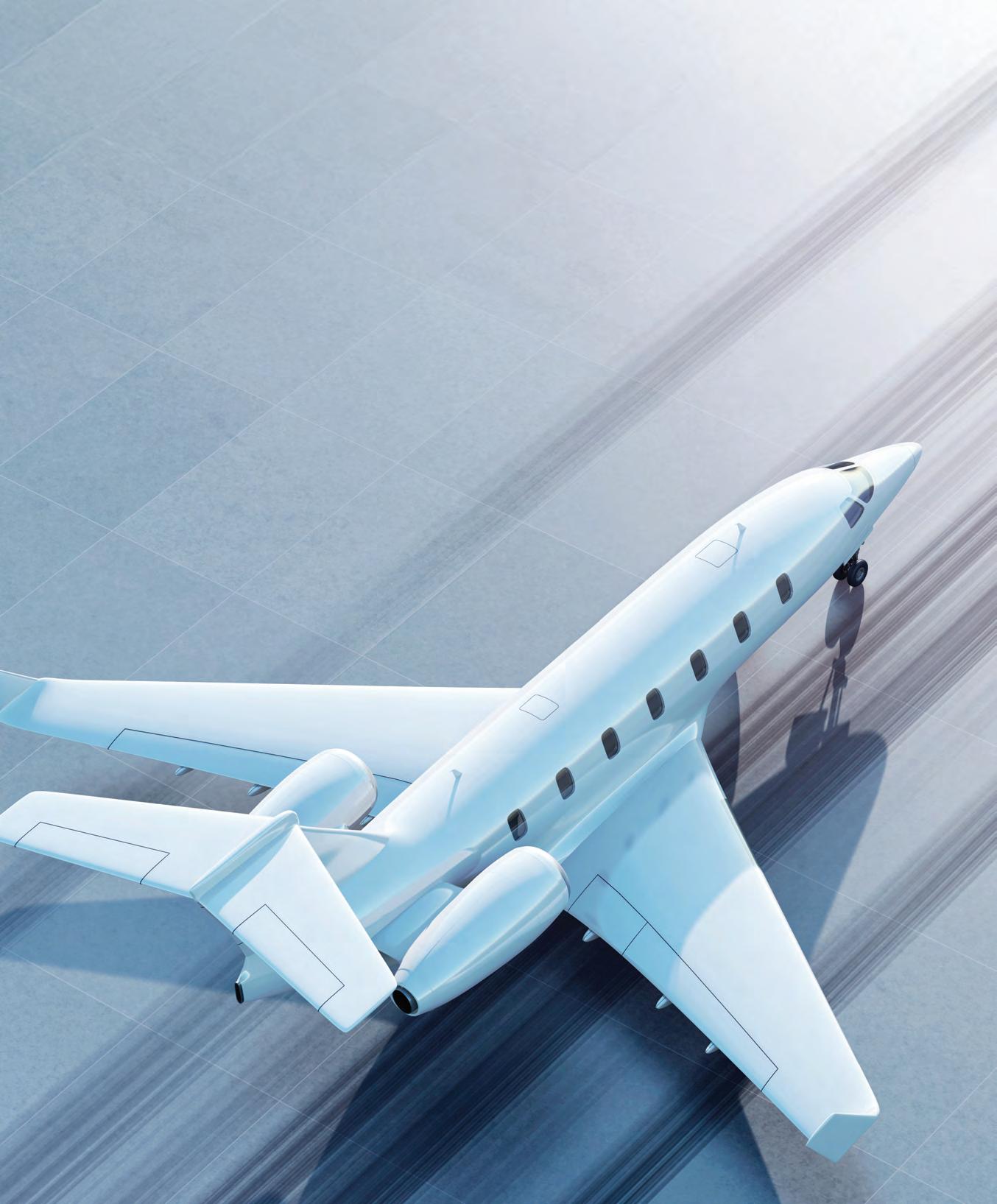
Subscribers can also:
– Generate a comprehensive list of all aircraft transactions in the last 12 months
– View a detailed photo gallery for your specific aircraft
– Receive a weekly report summarizing market fluctuations


It starts with a spark. A moment of wonder. The kind that opens your eyes as a child and compels you forward as an adult. It’s what we nurture when we support education programs worldwide, and it’s what we look for when we grow our global team. Encouraging great minds to pursue great breakthroughs – it’s how we drive progress for generations to come.
Learn more at RTX.com